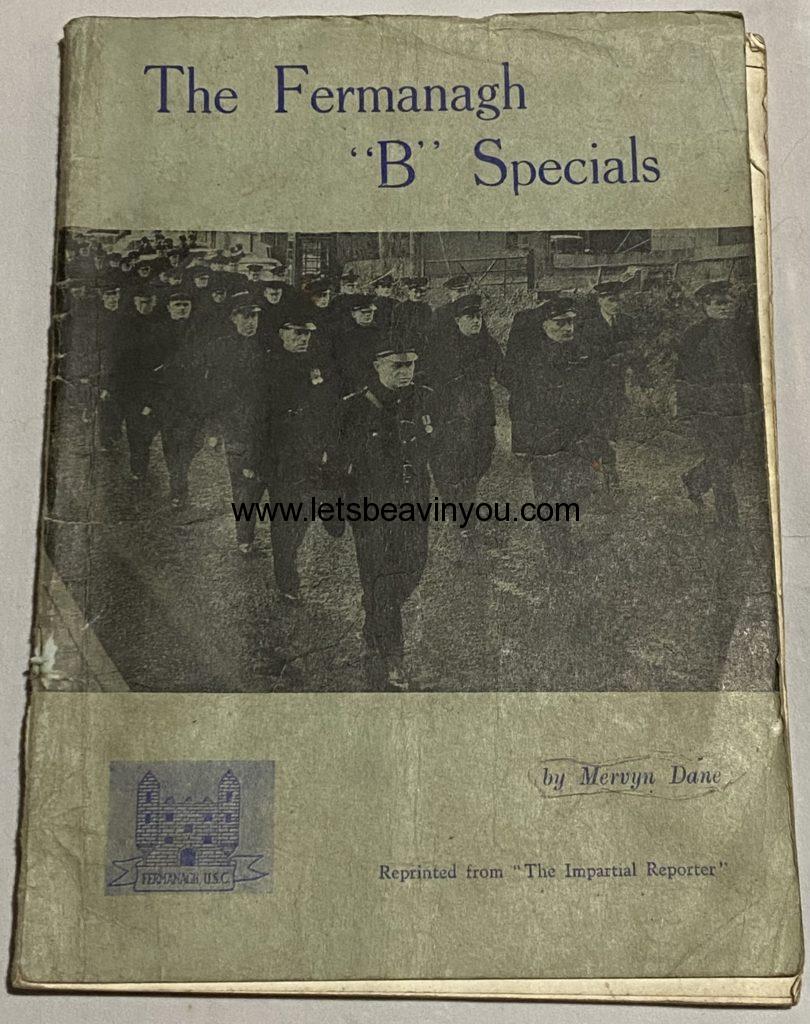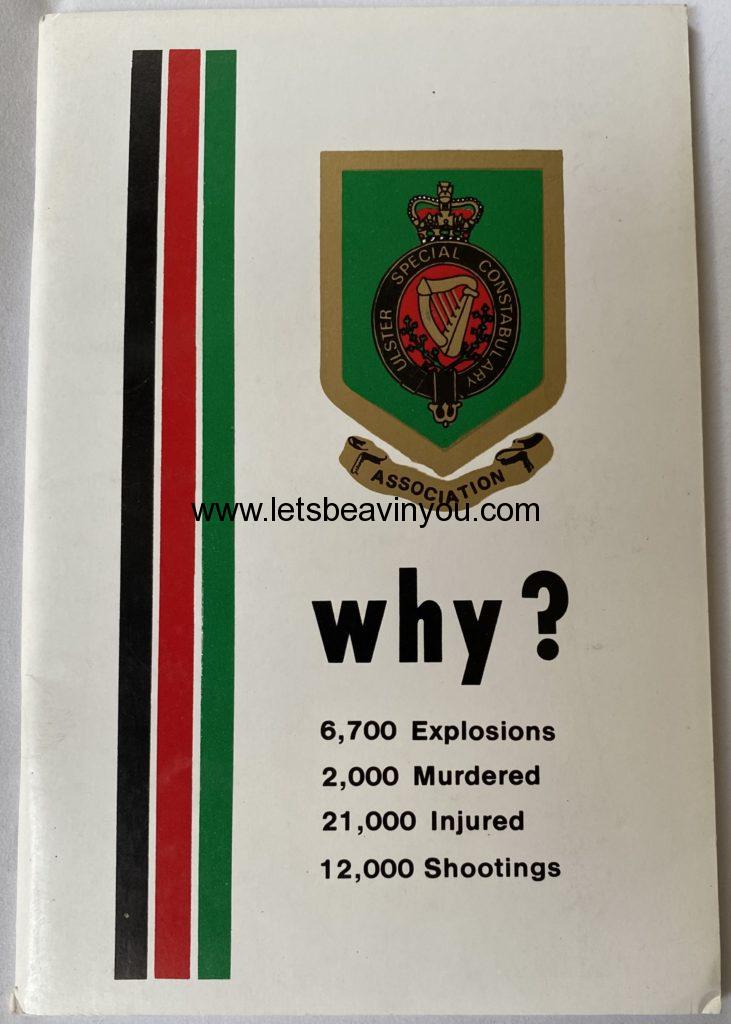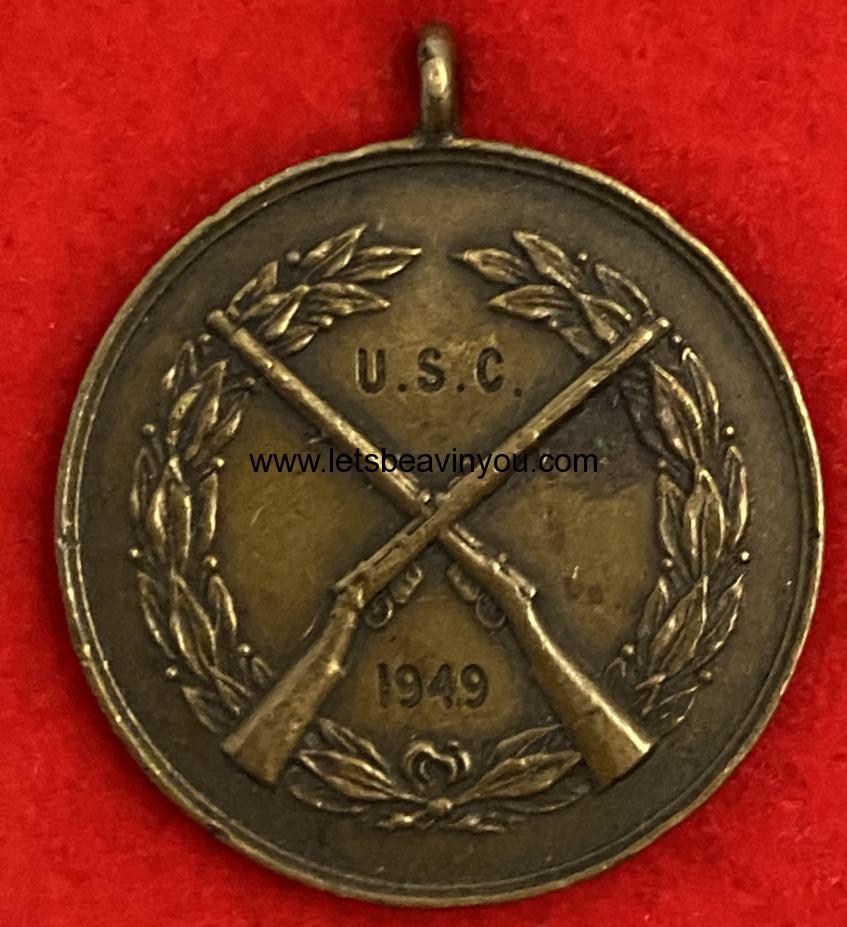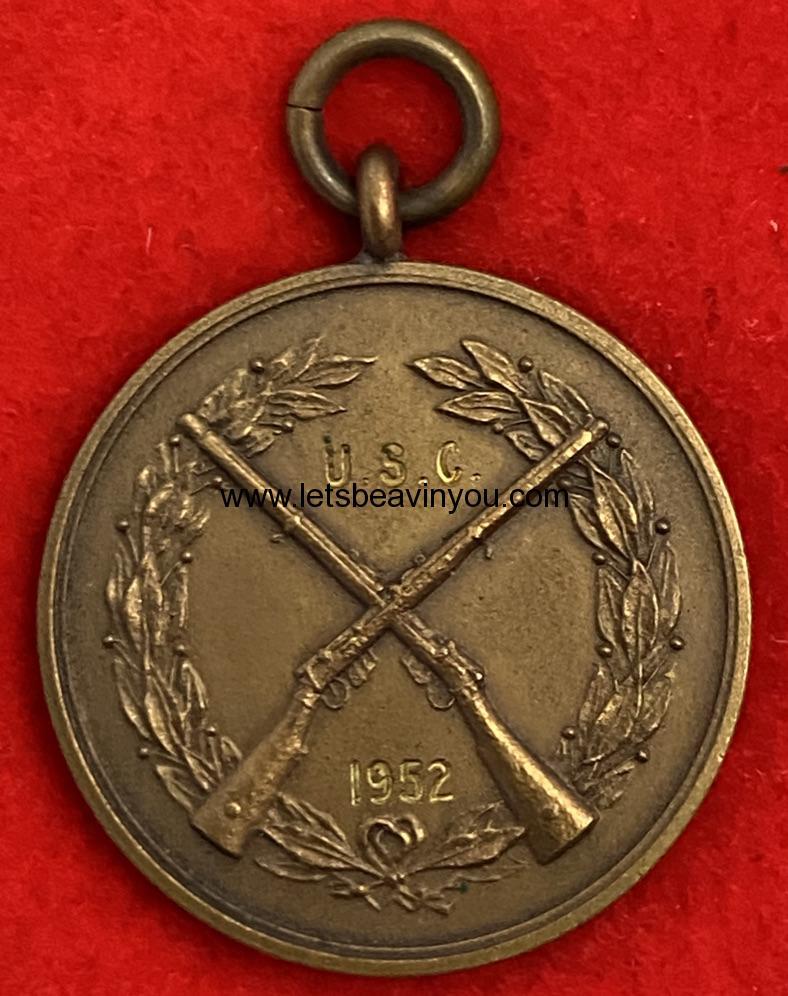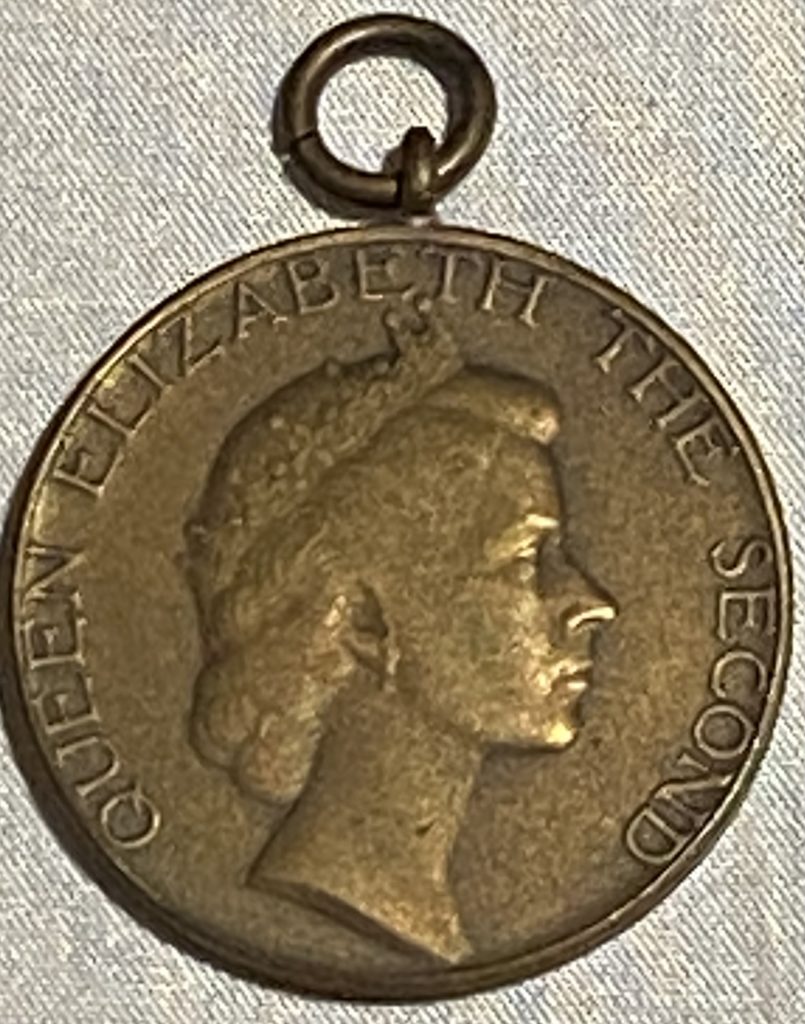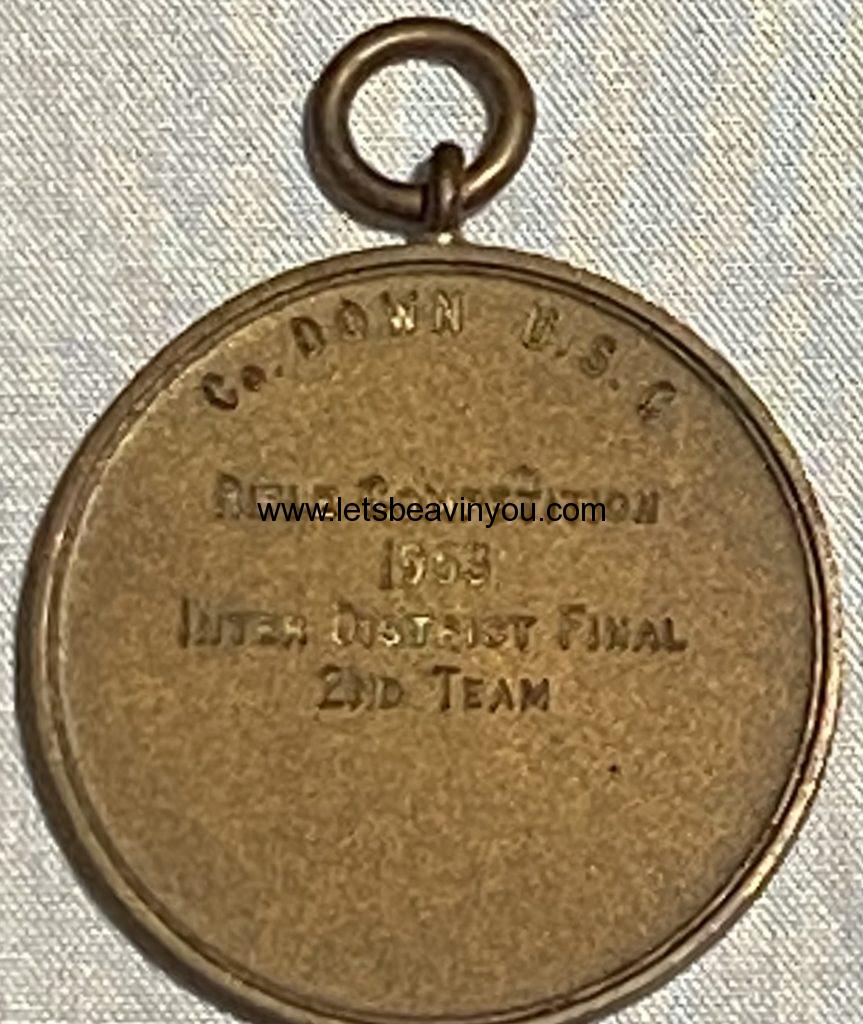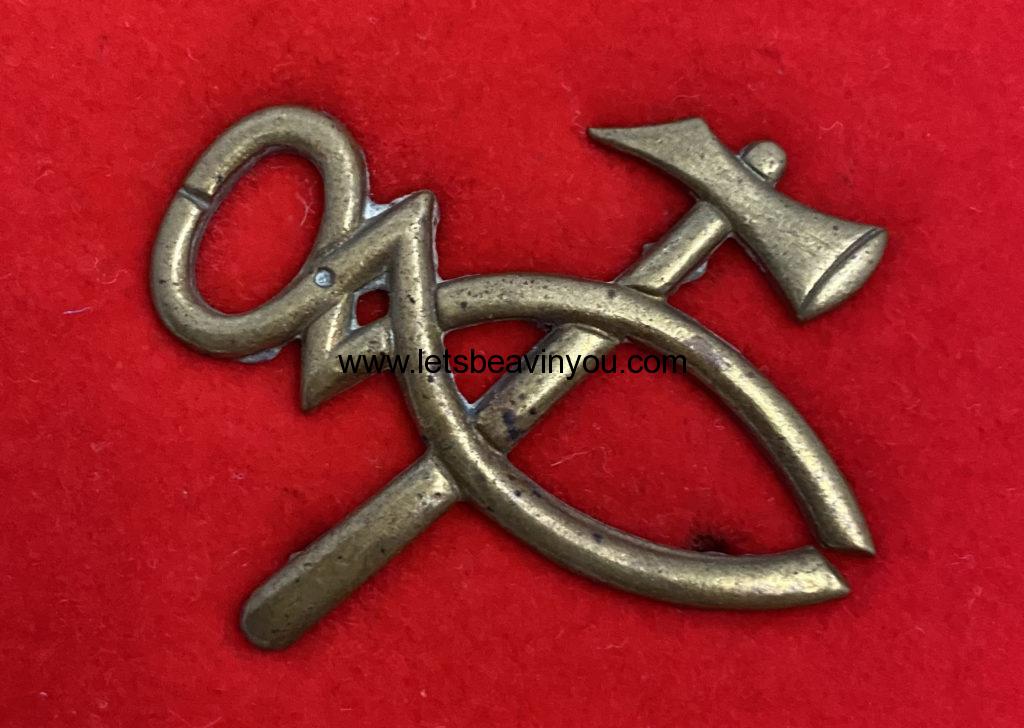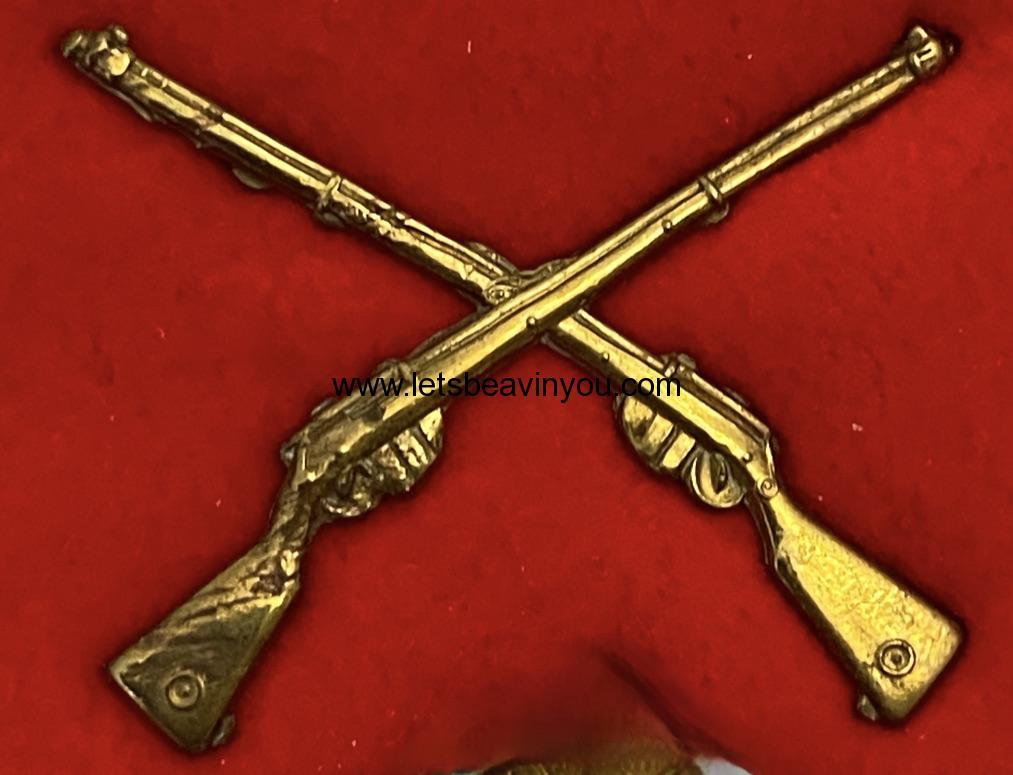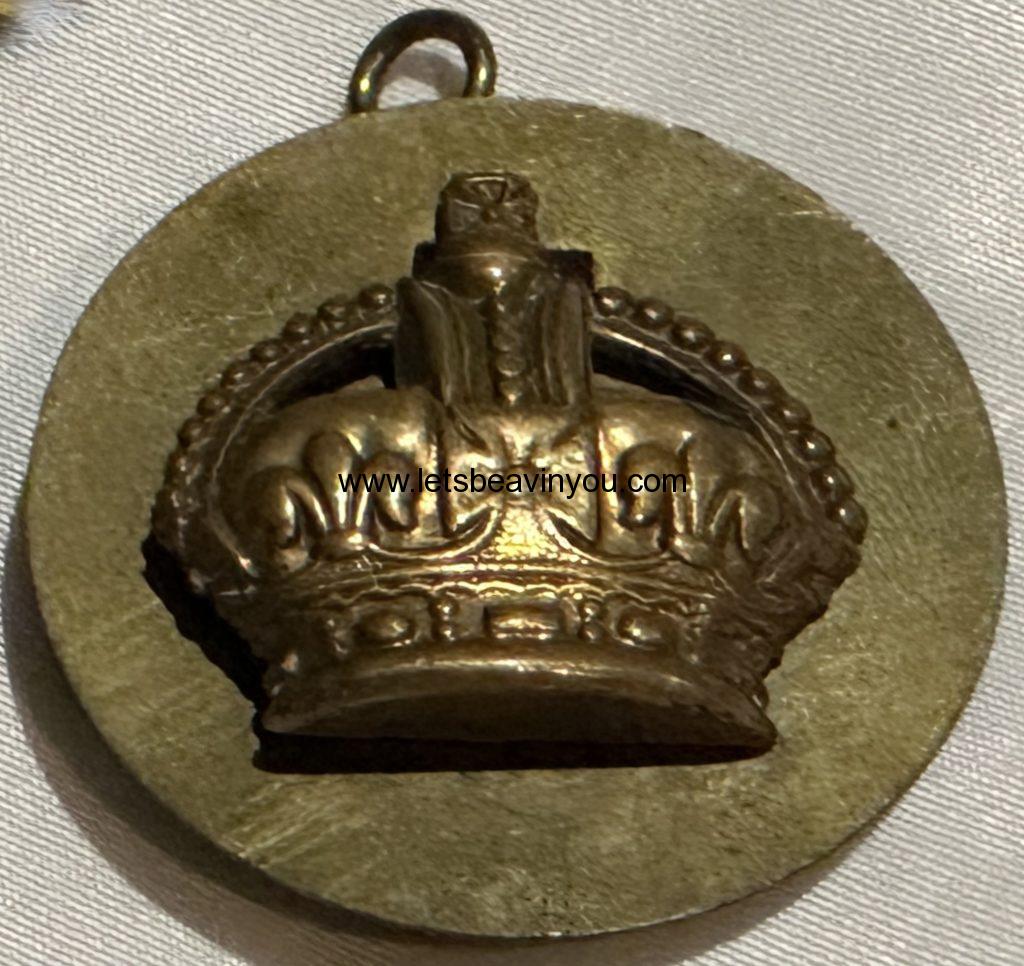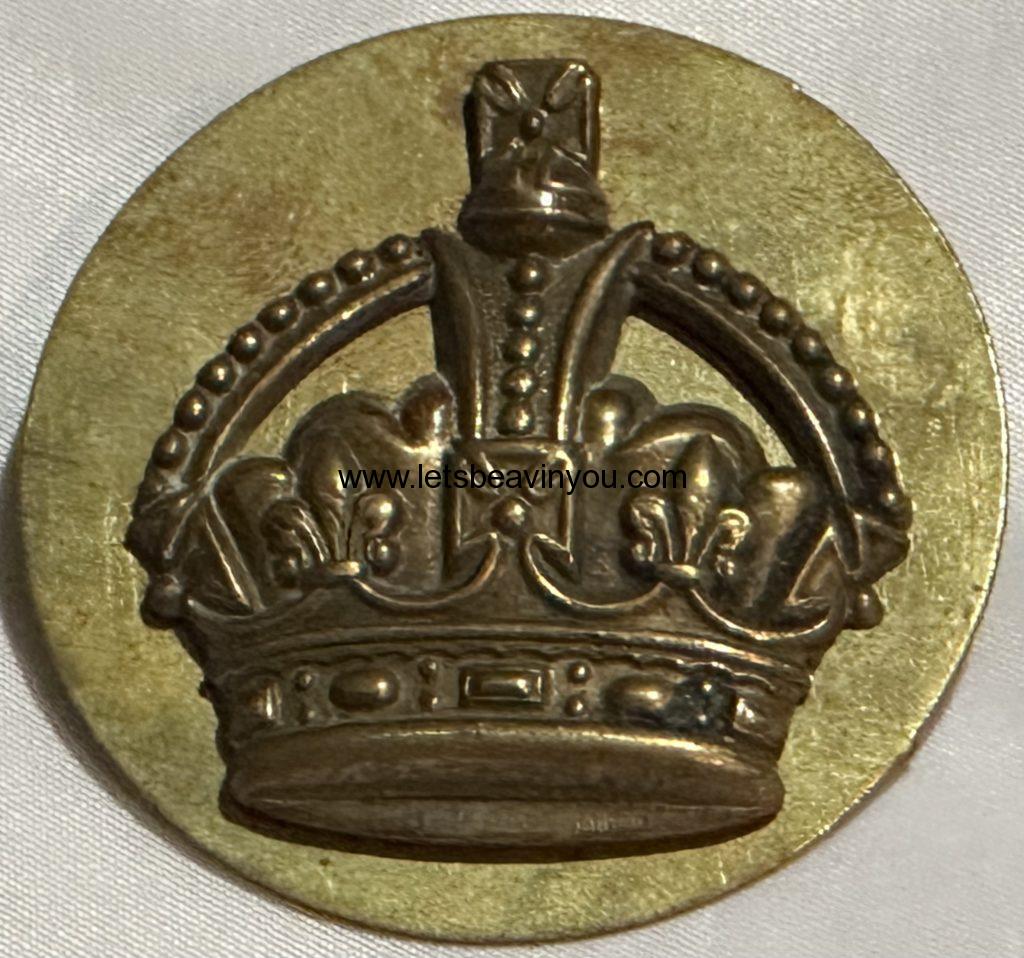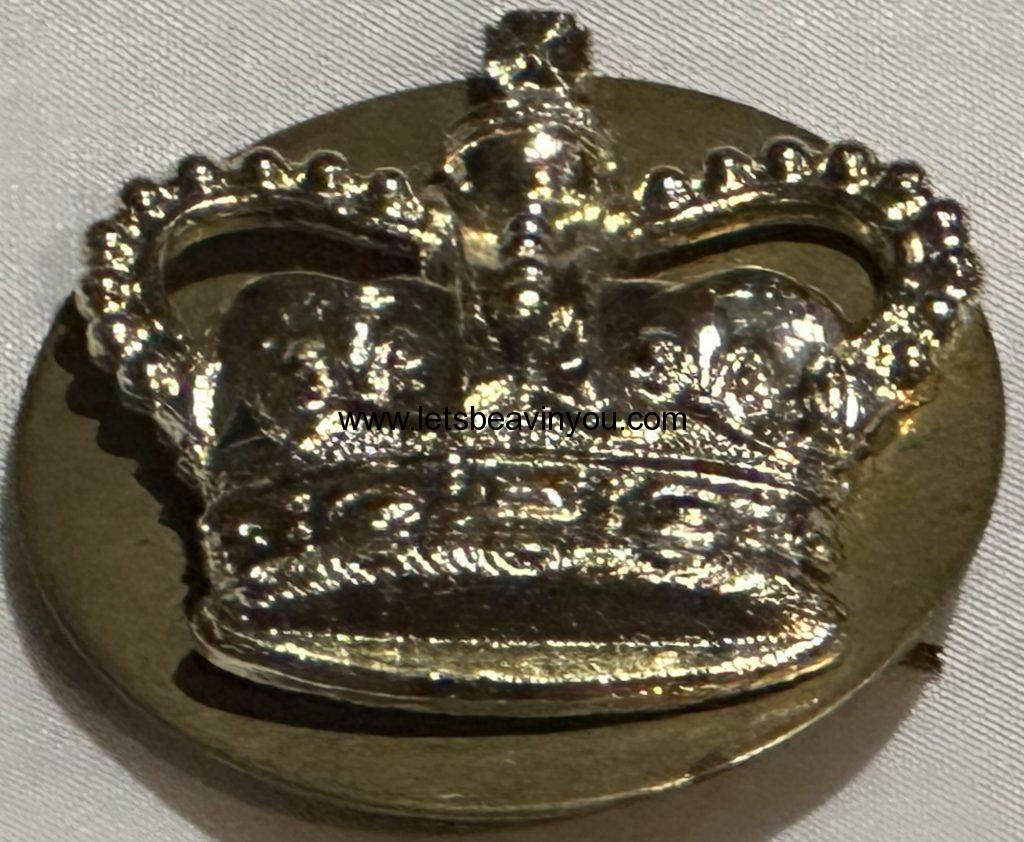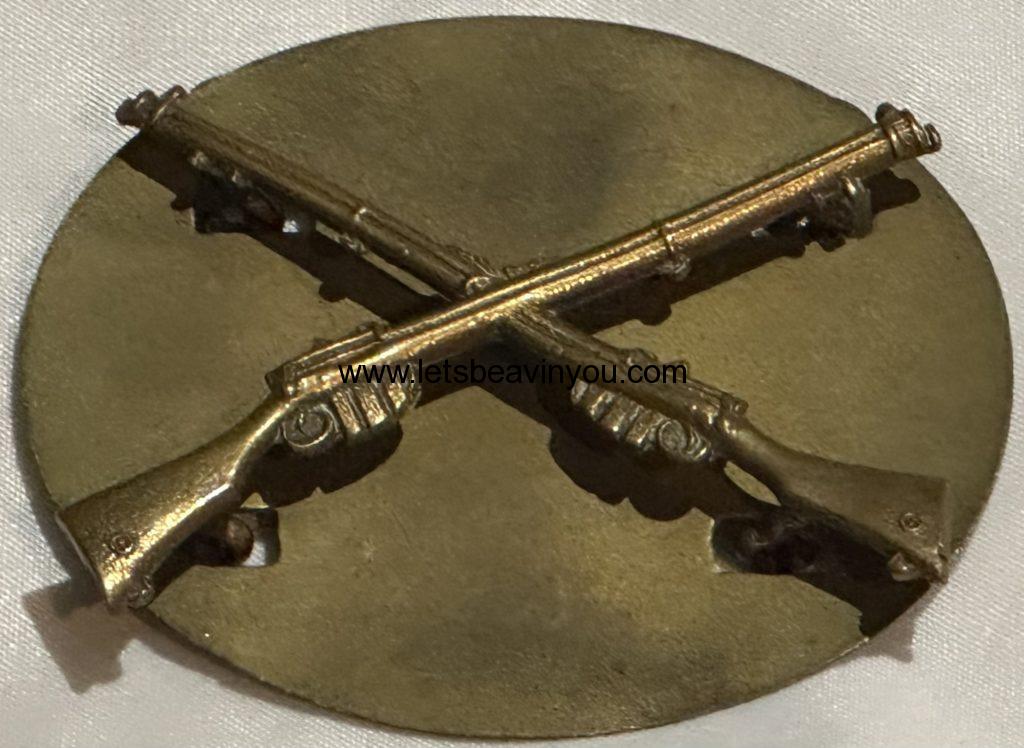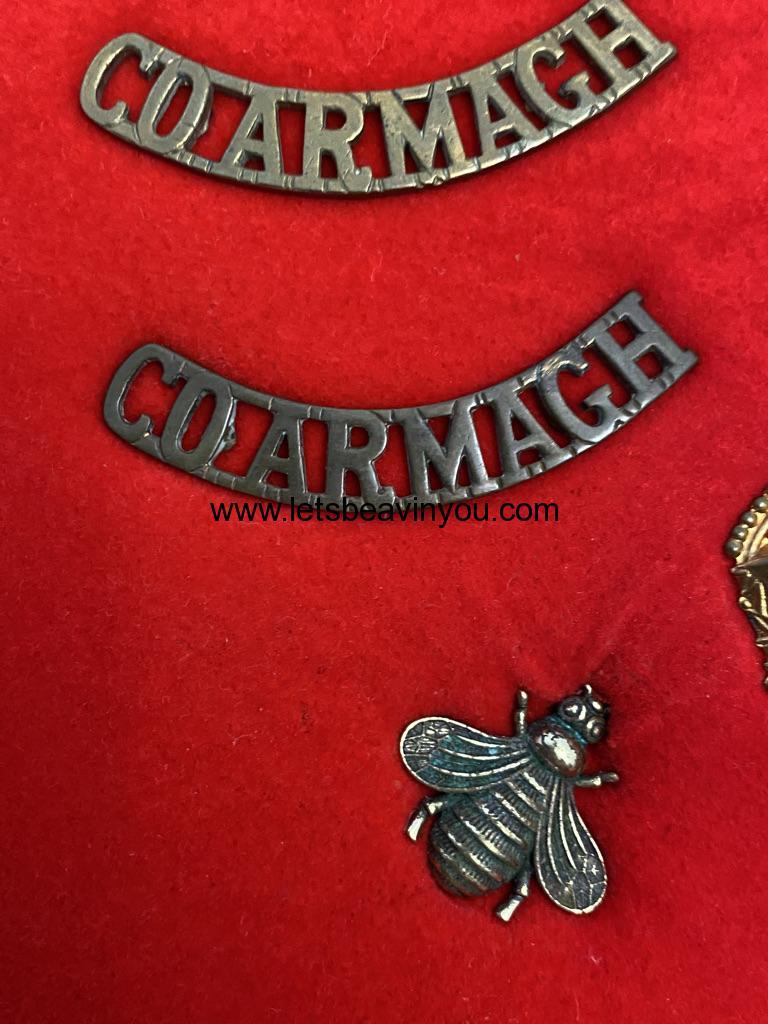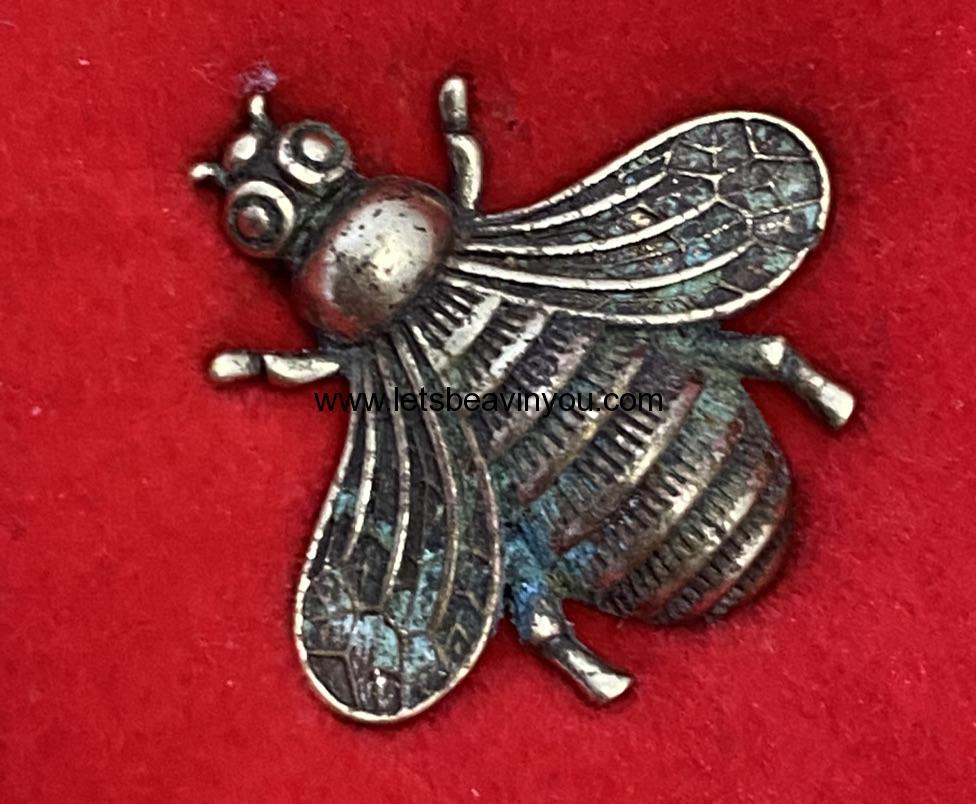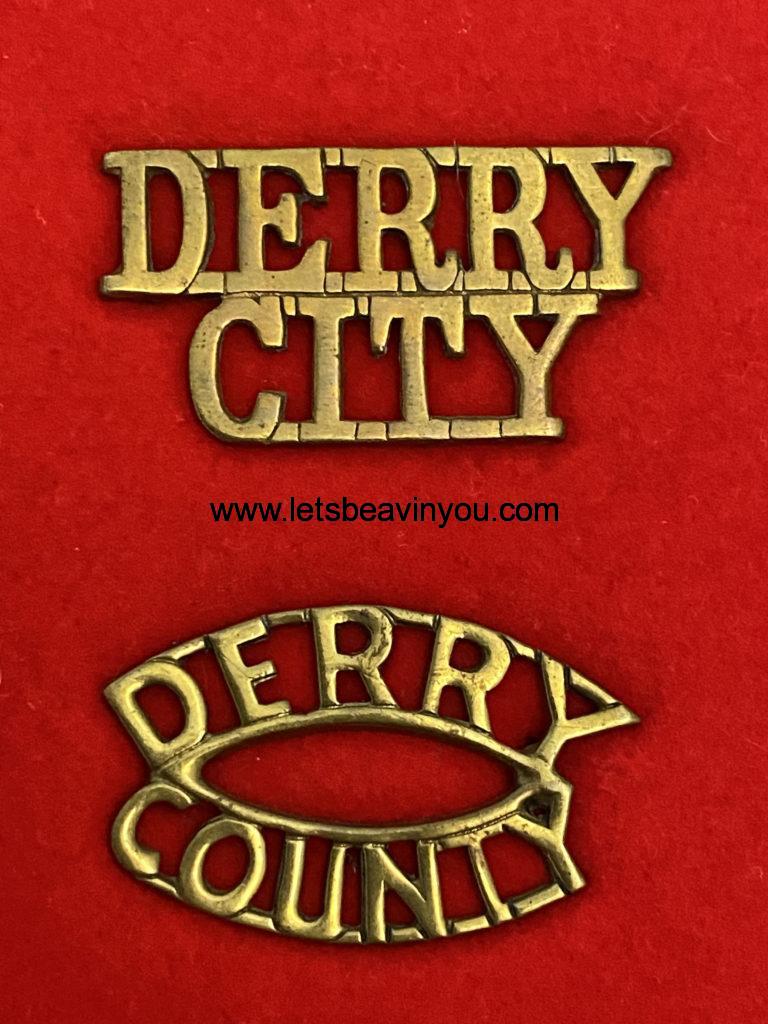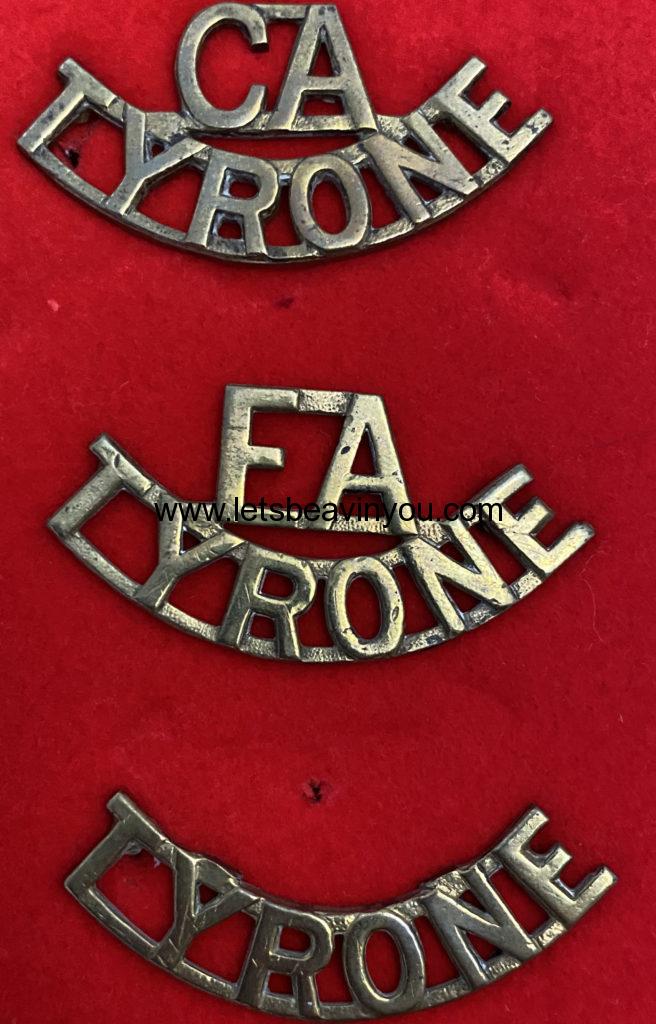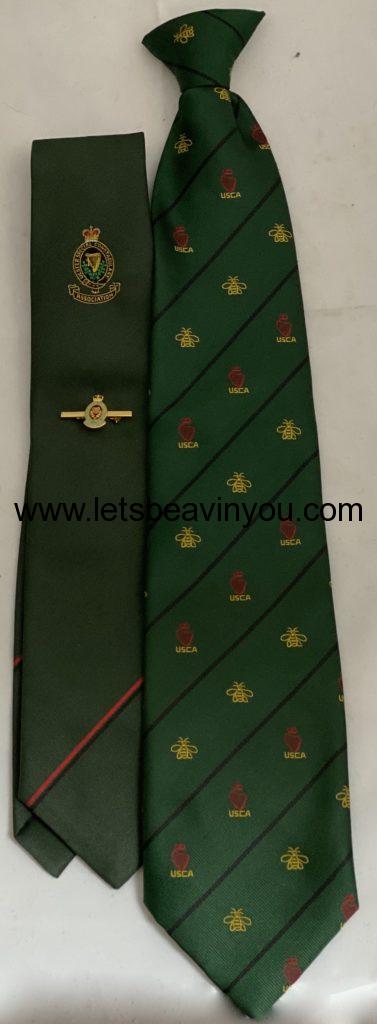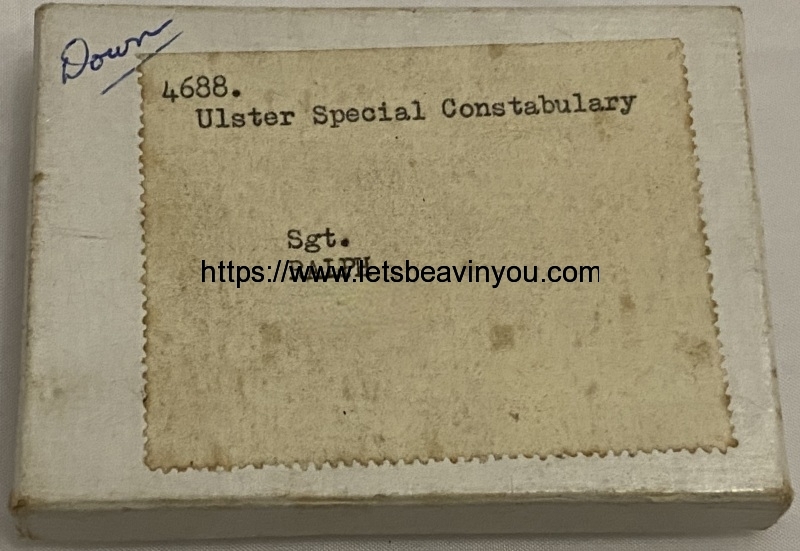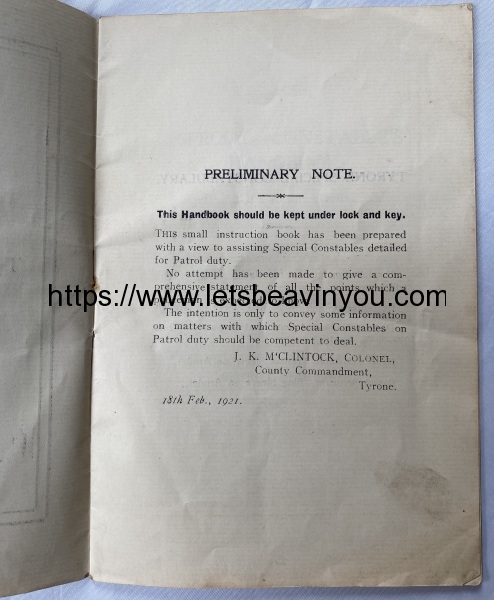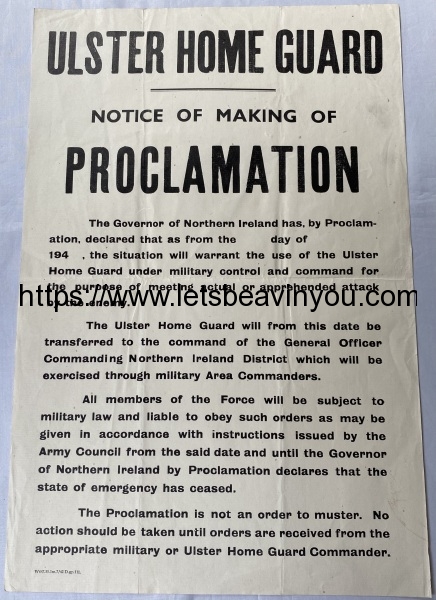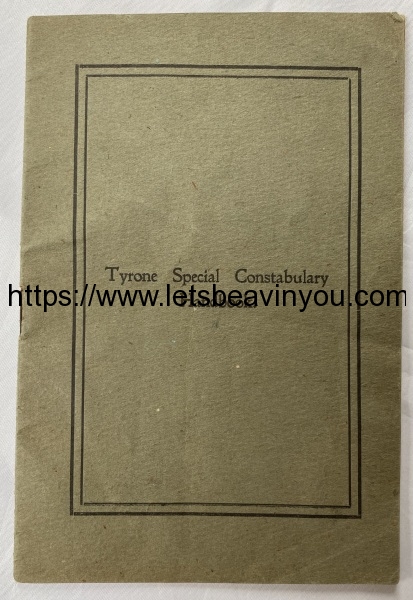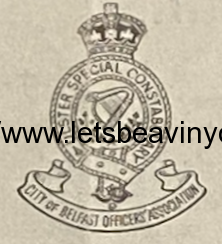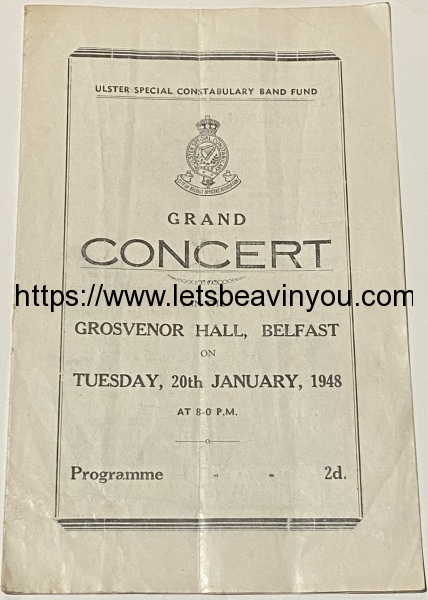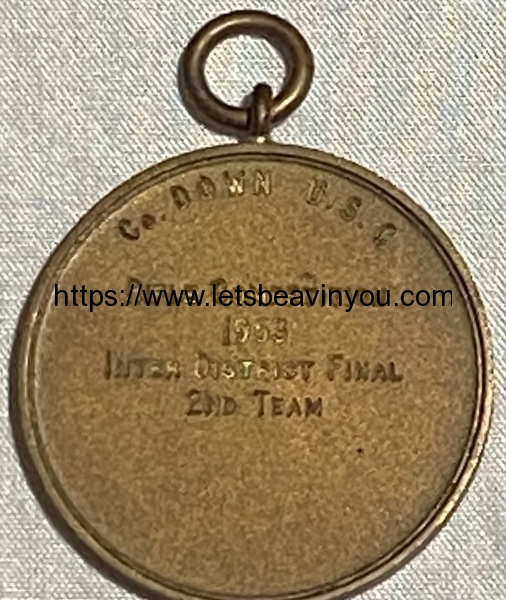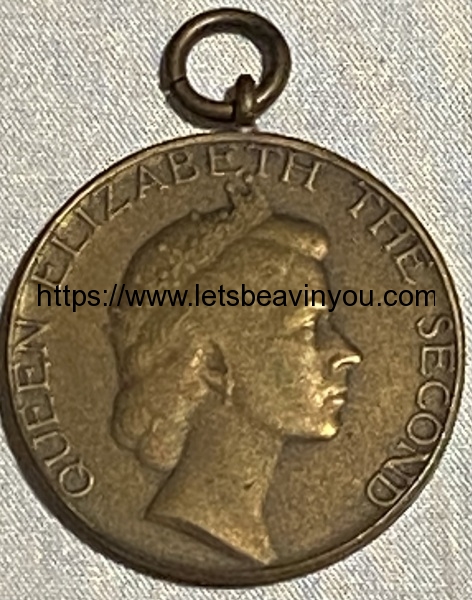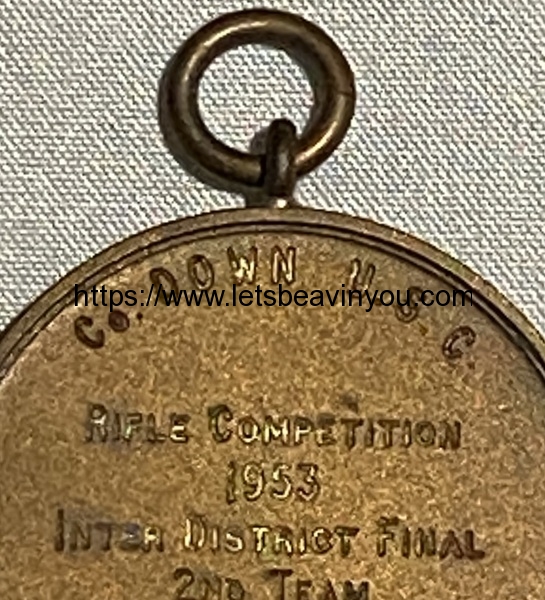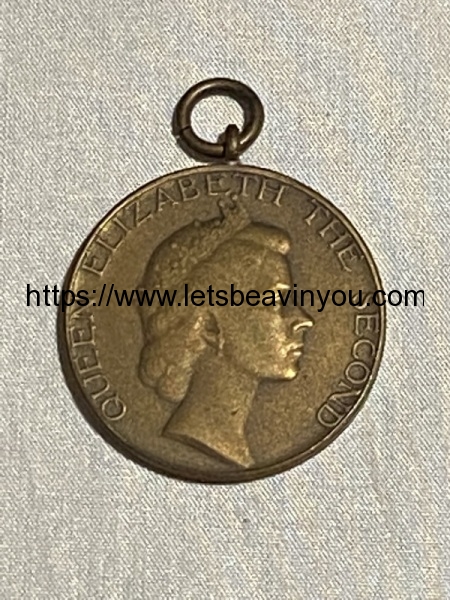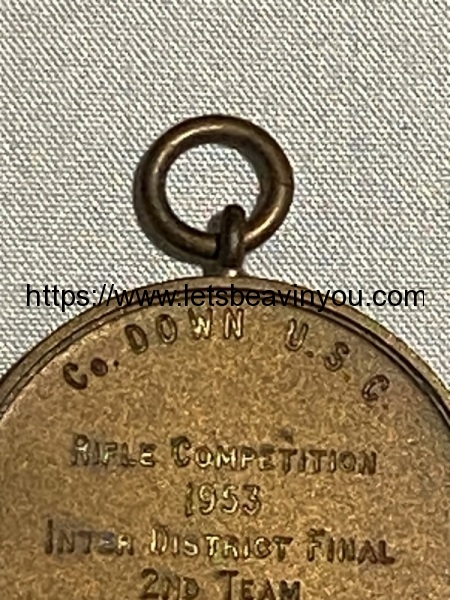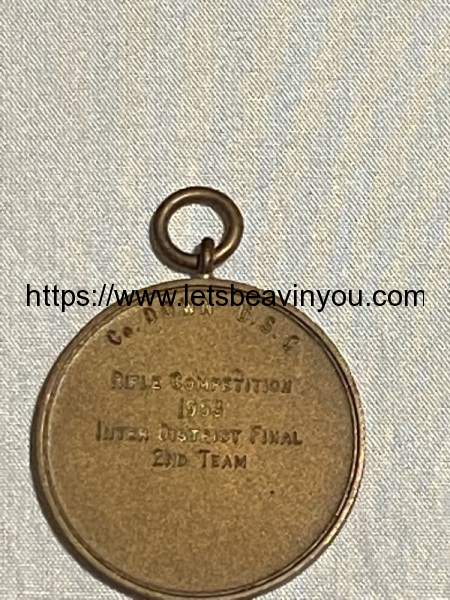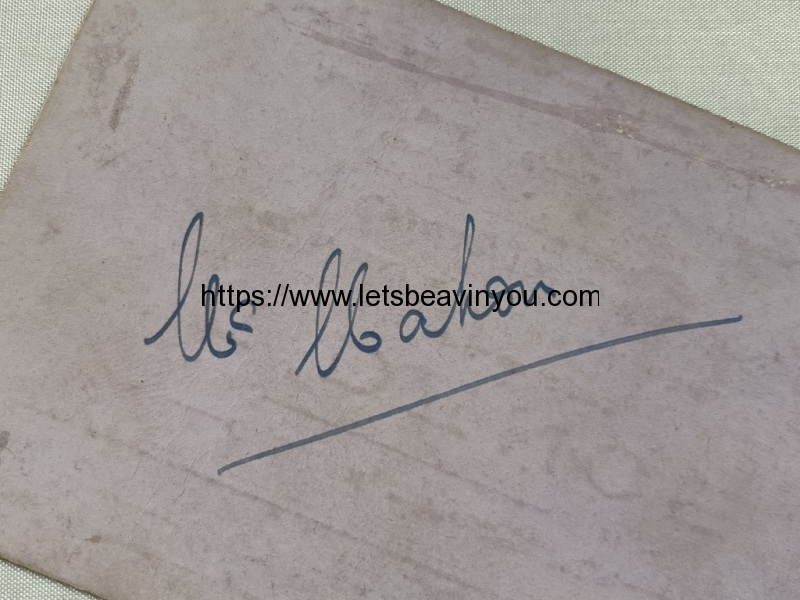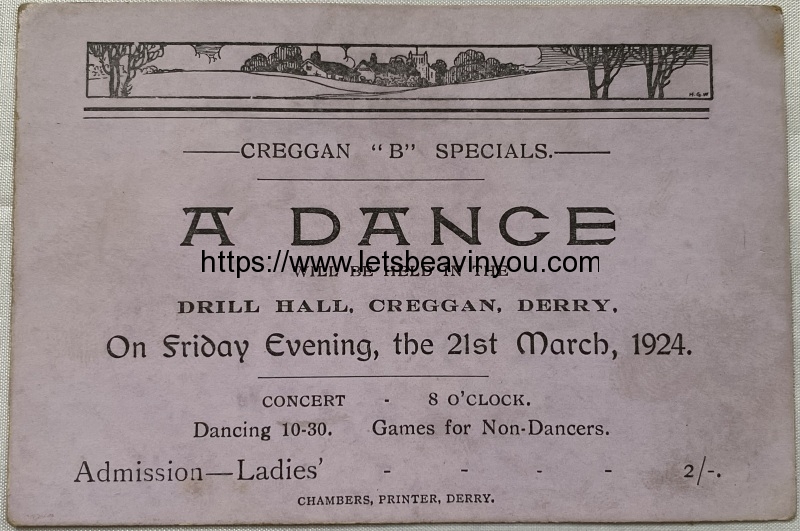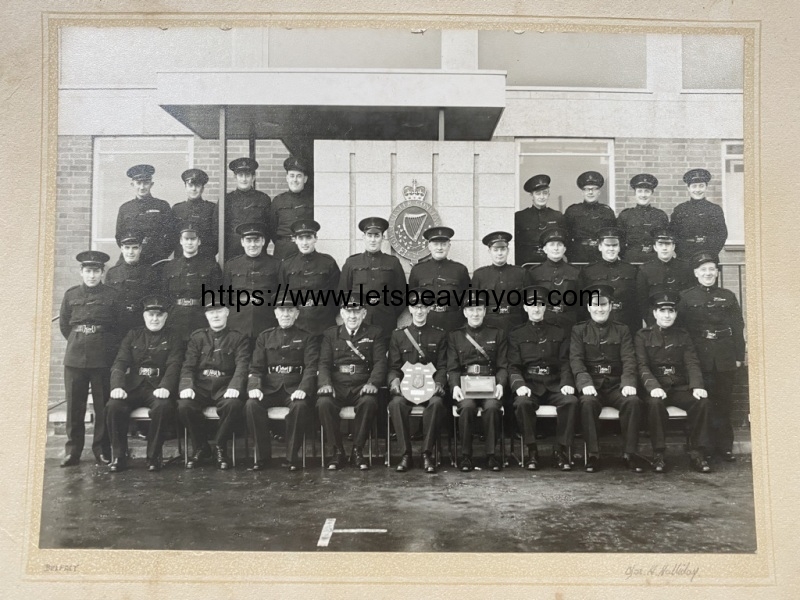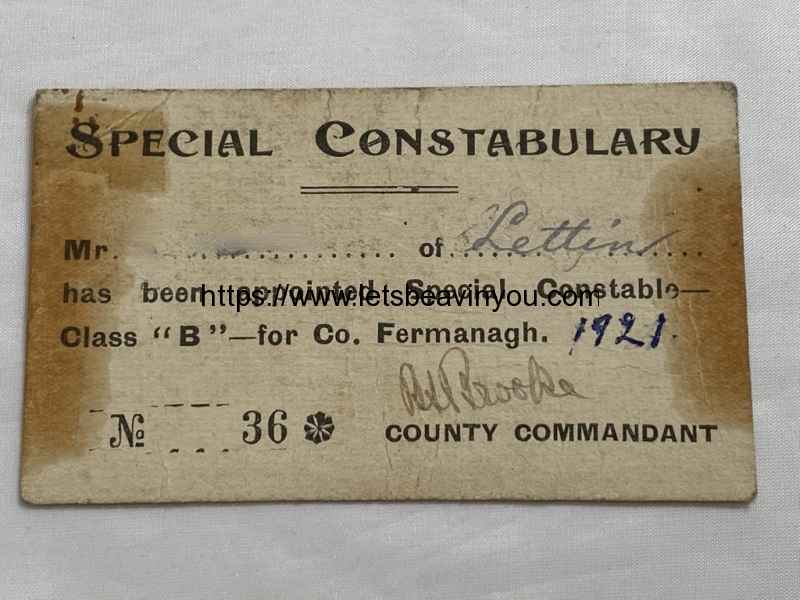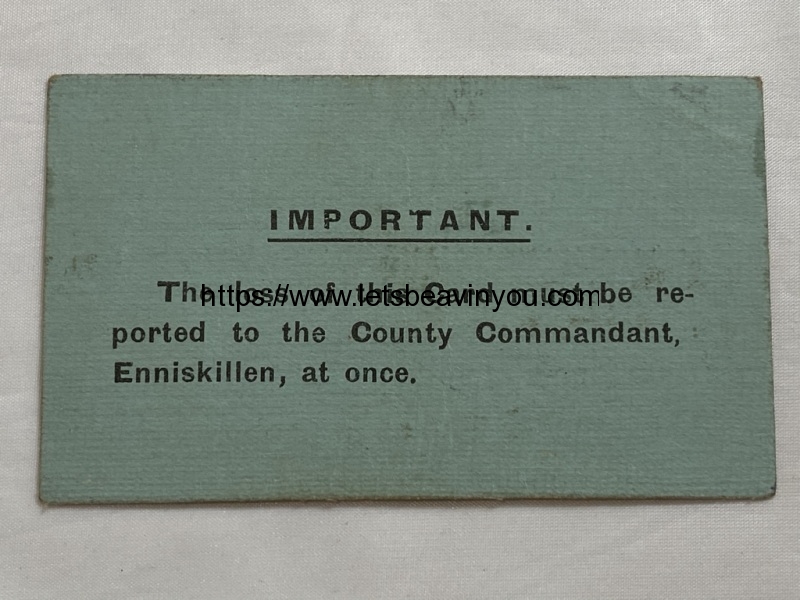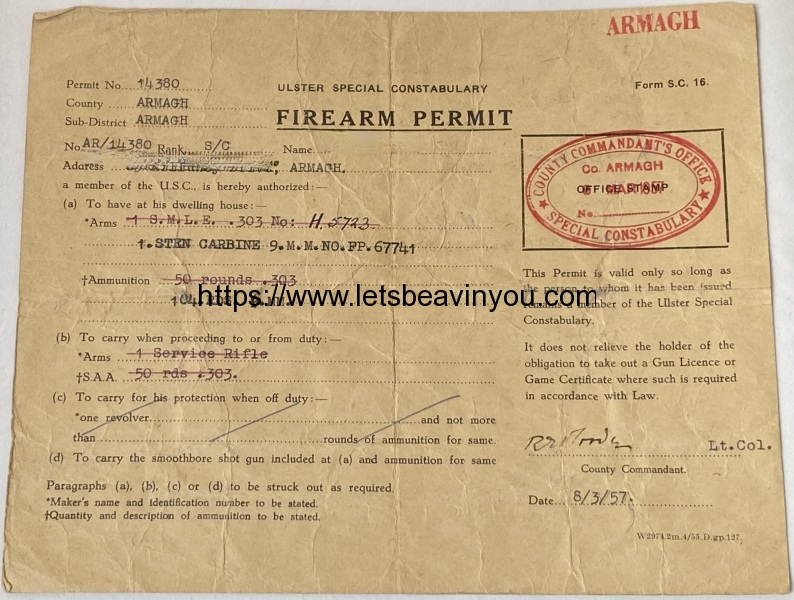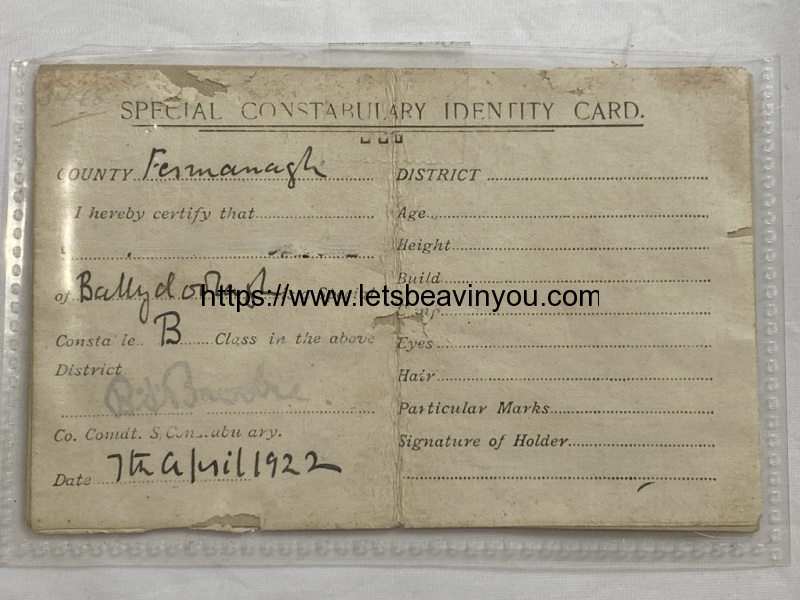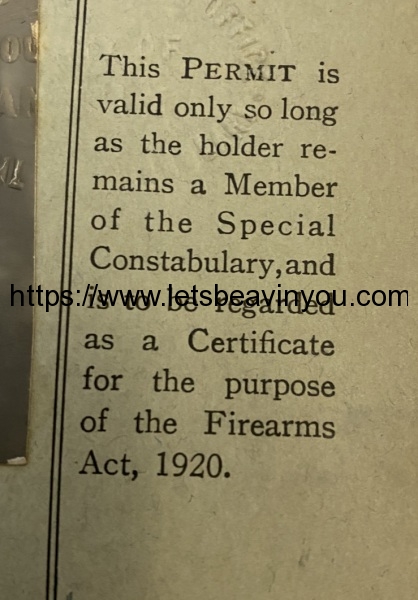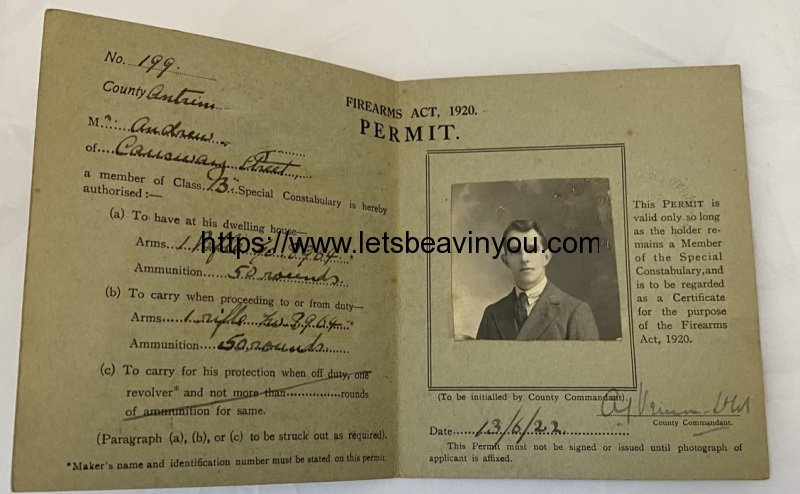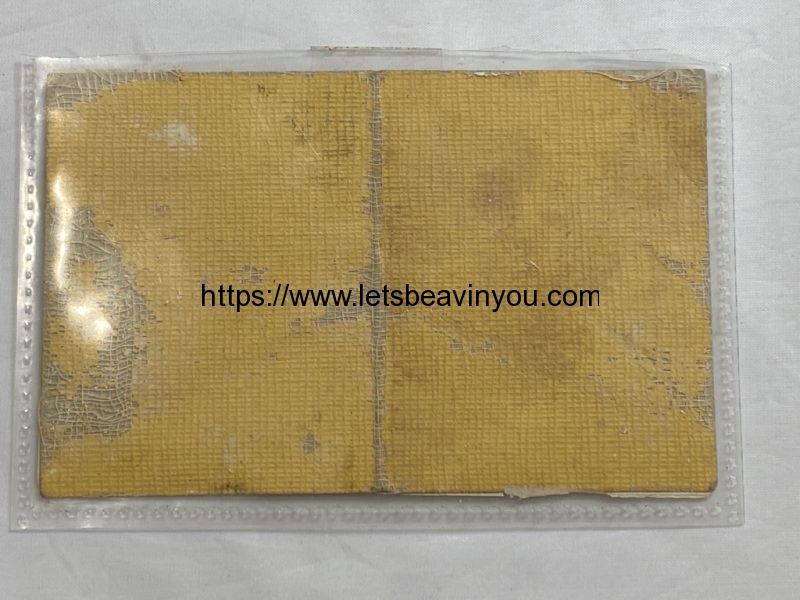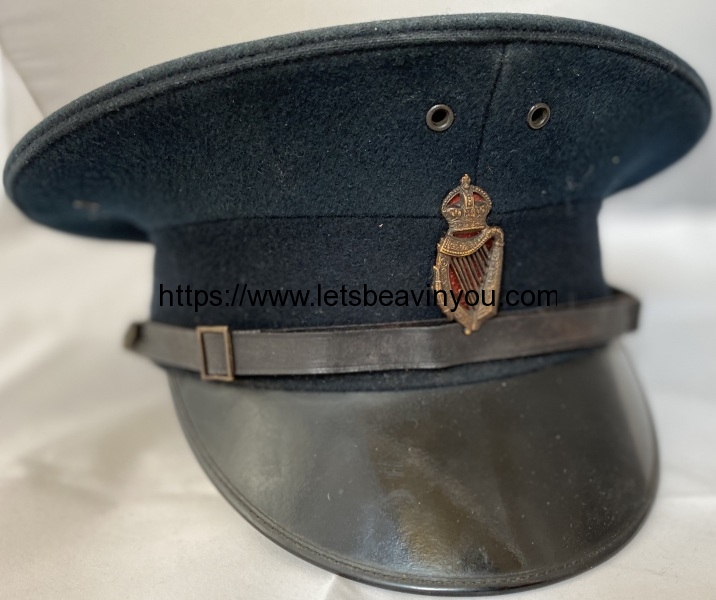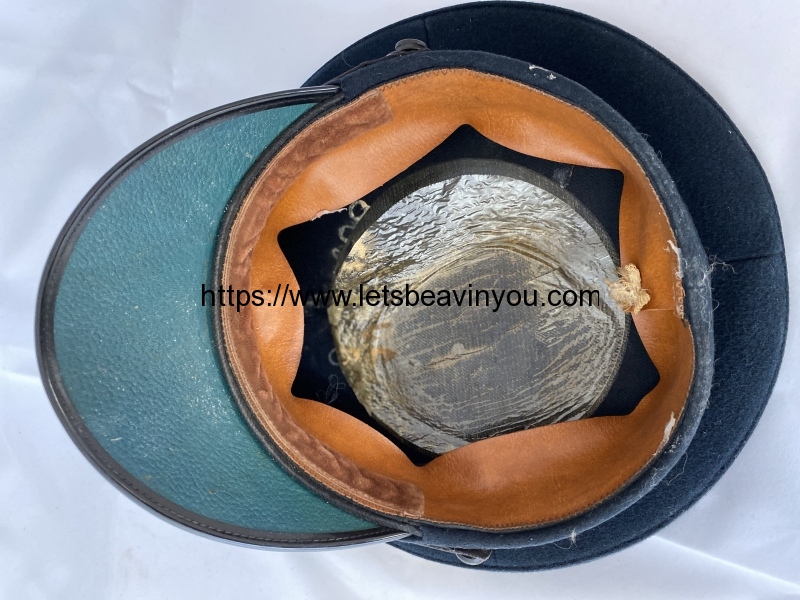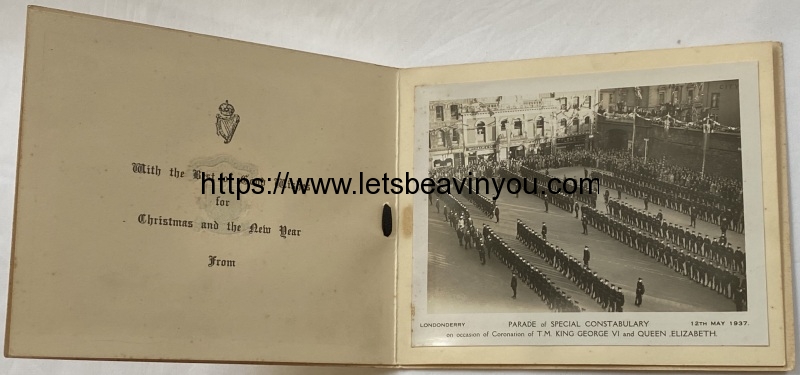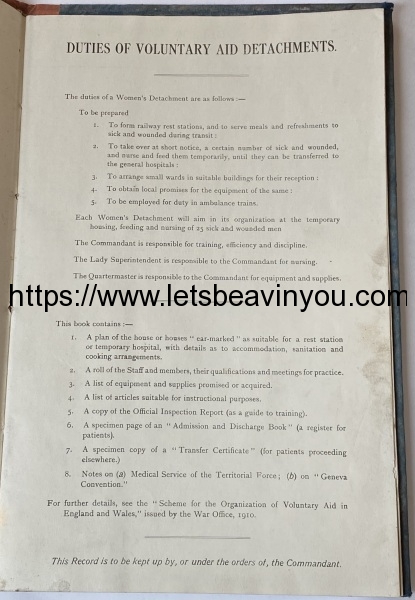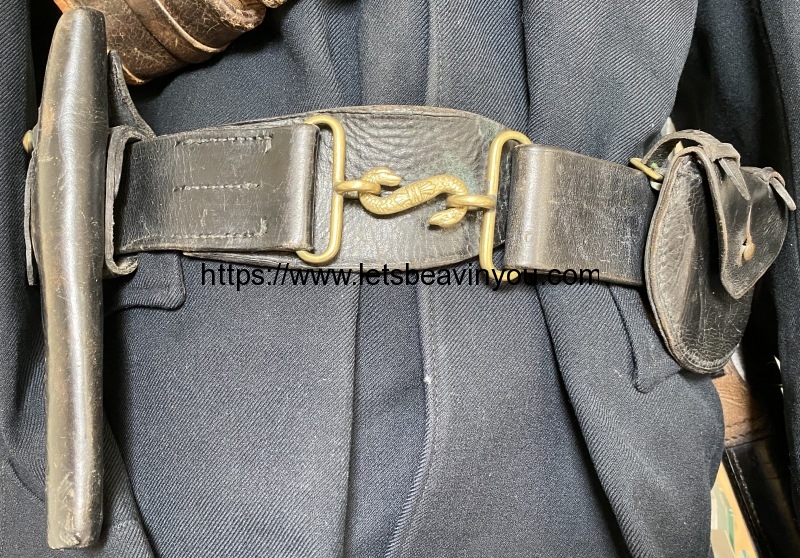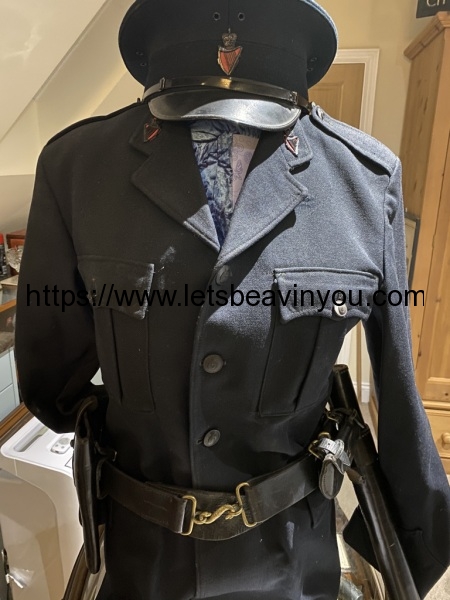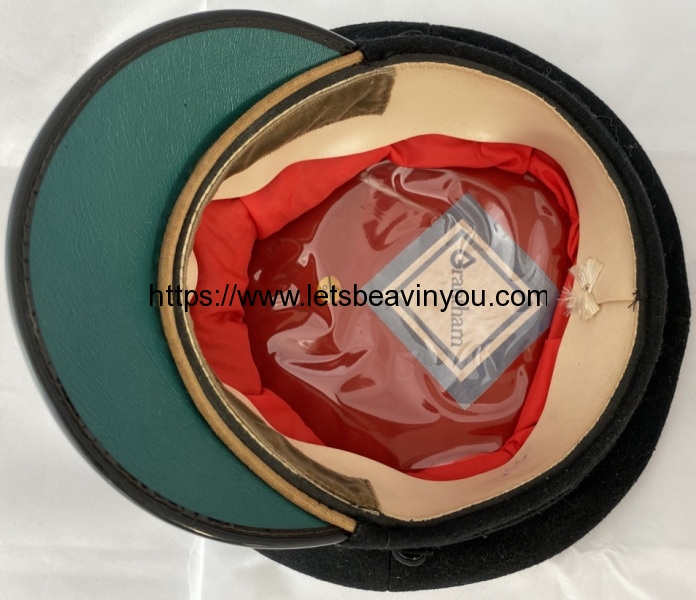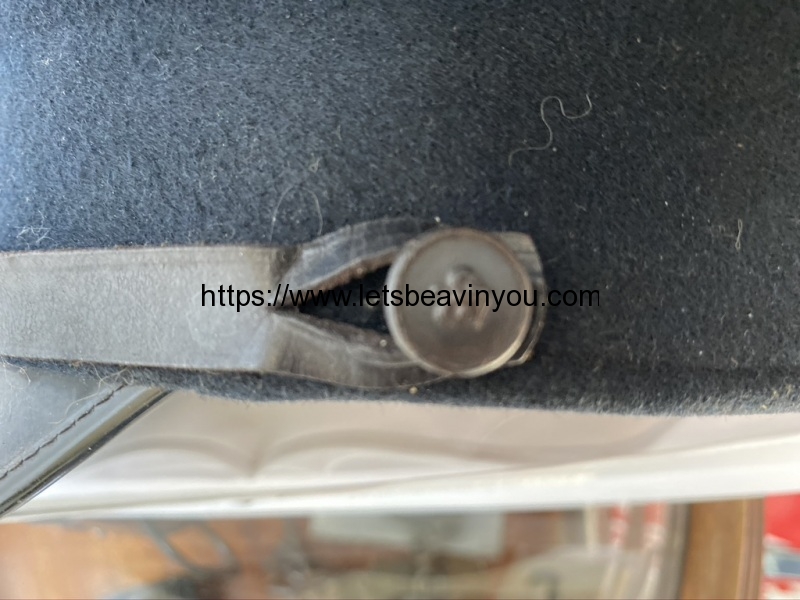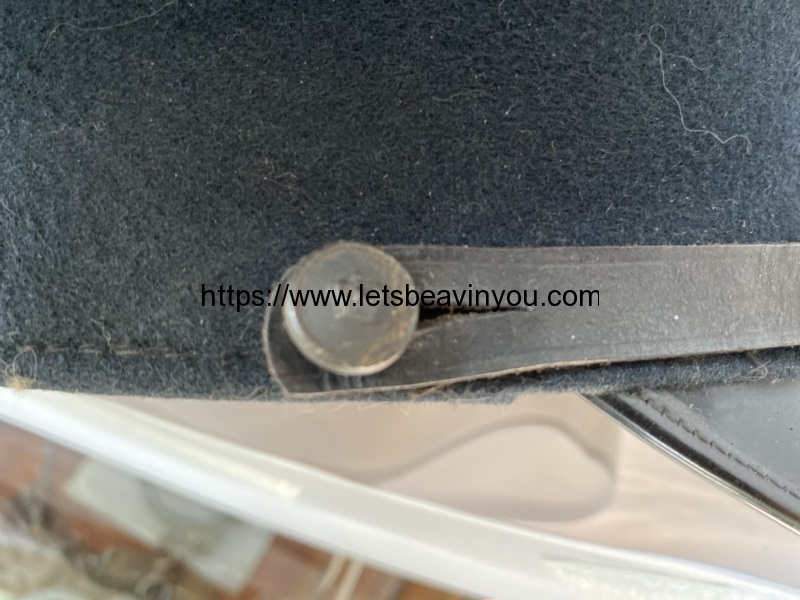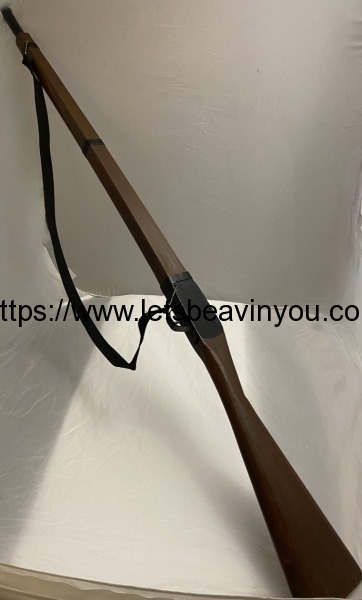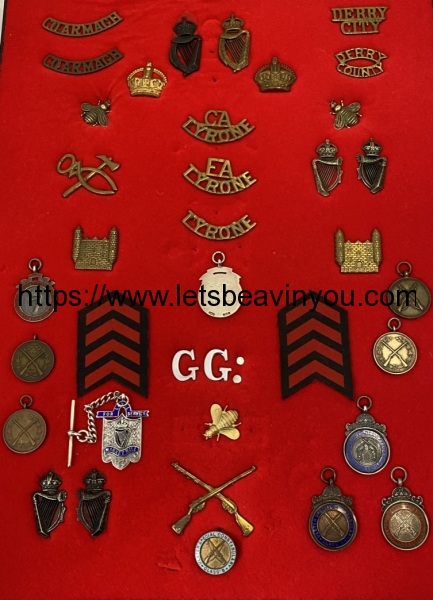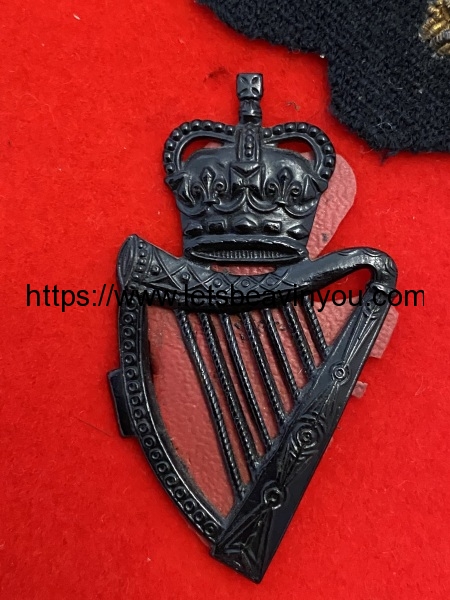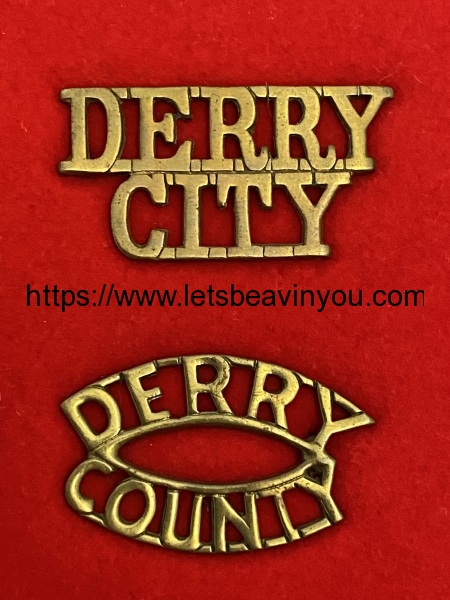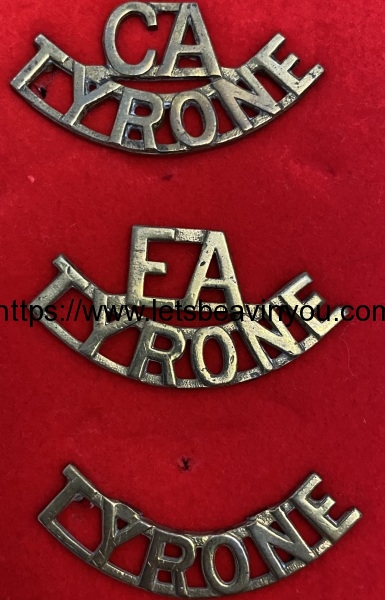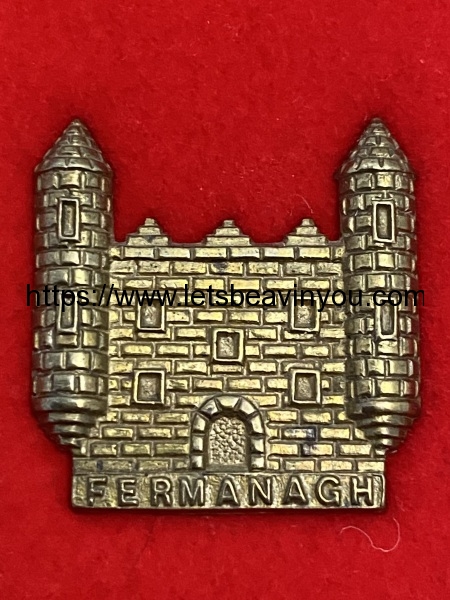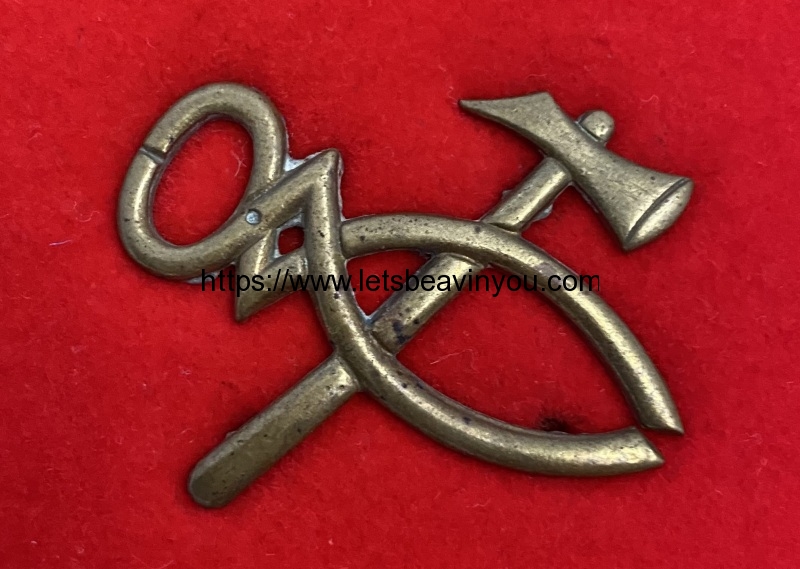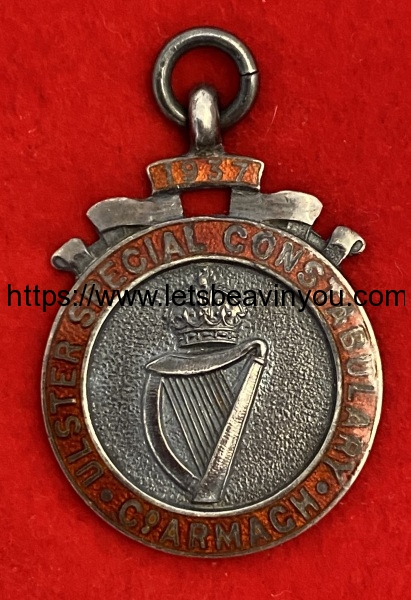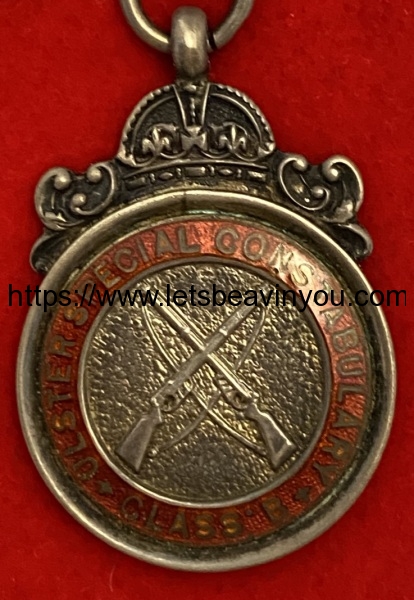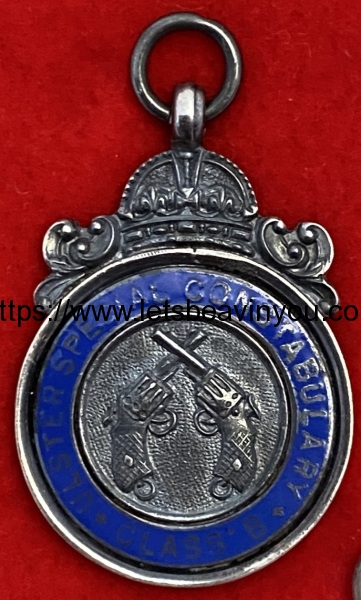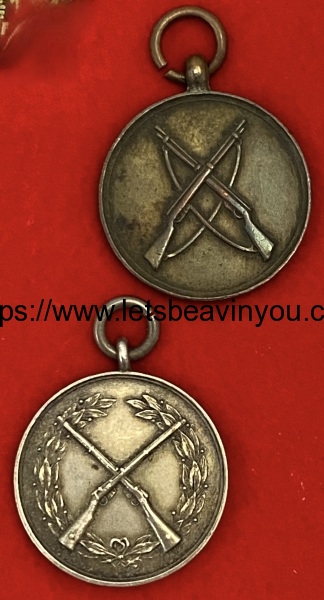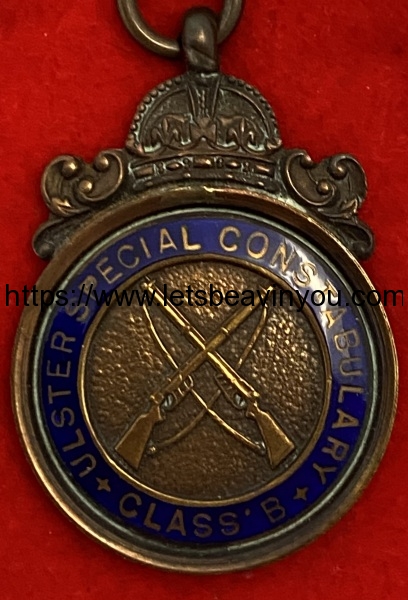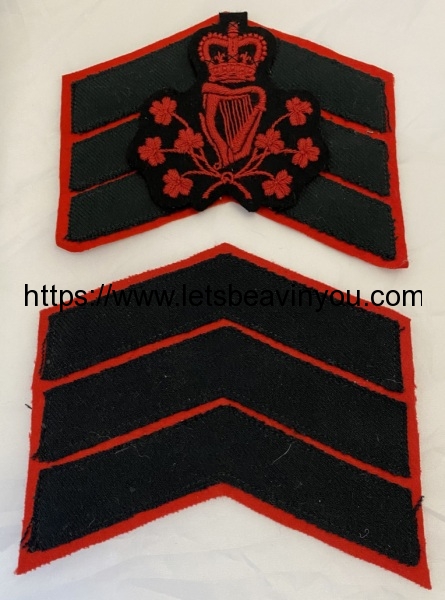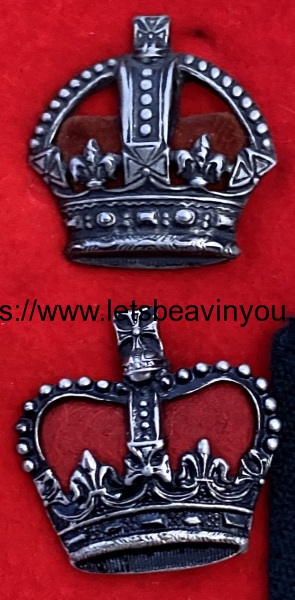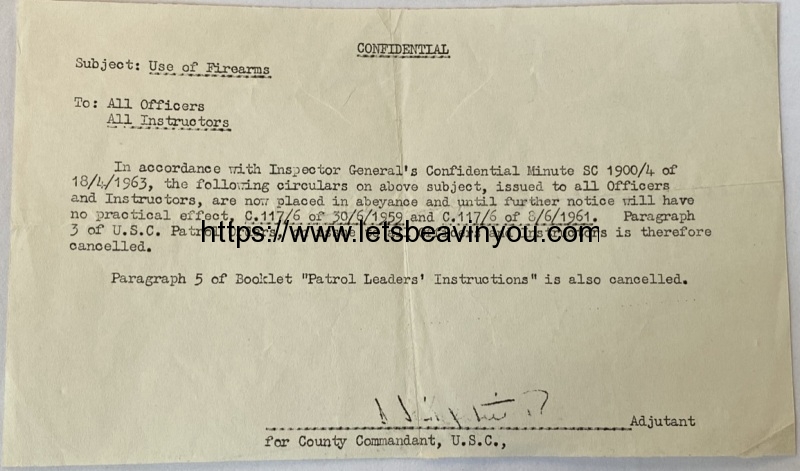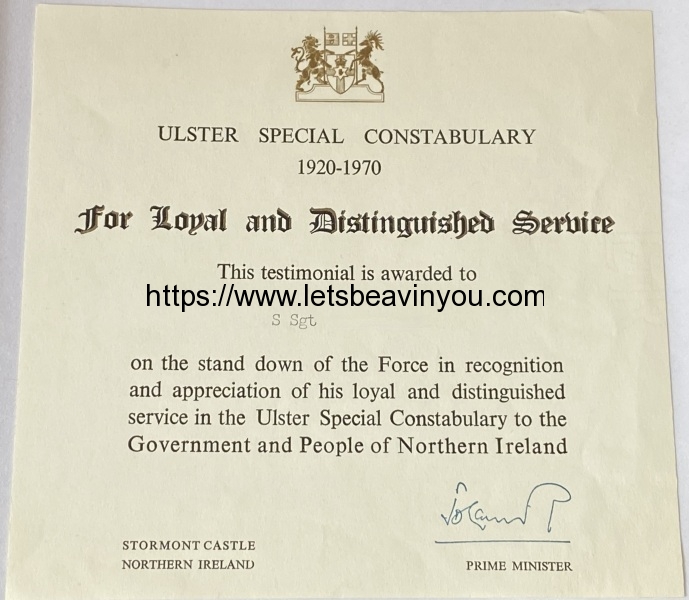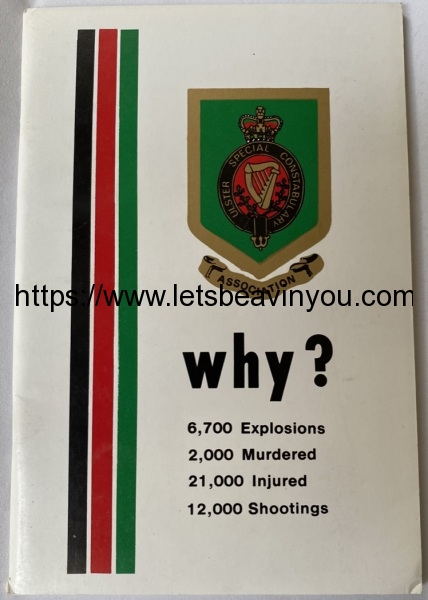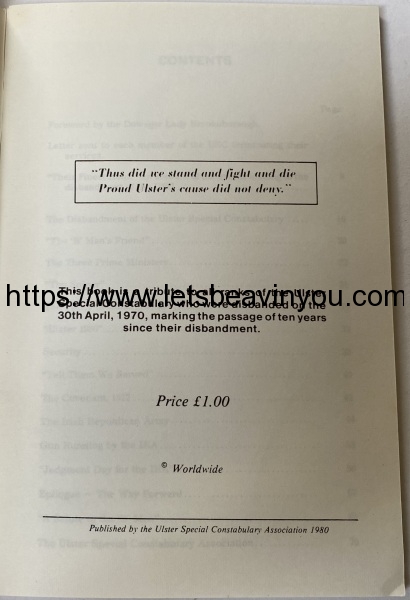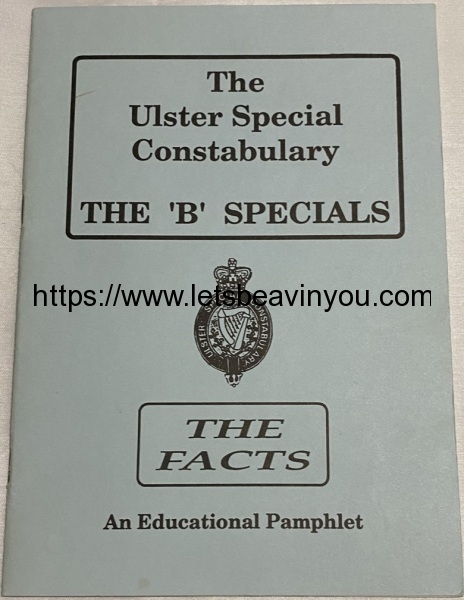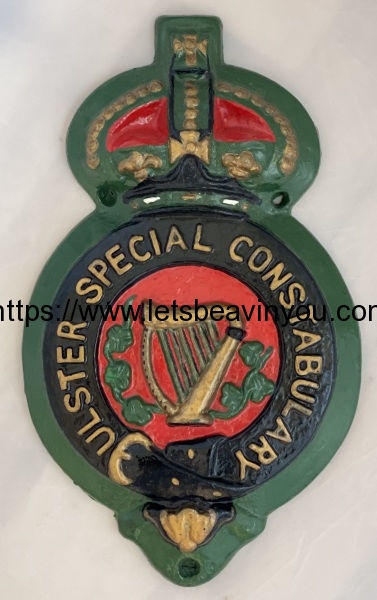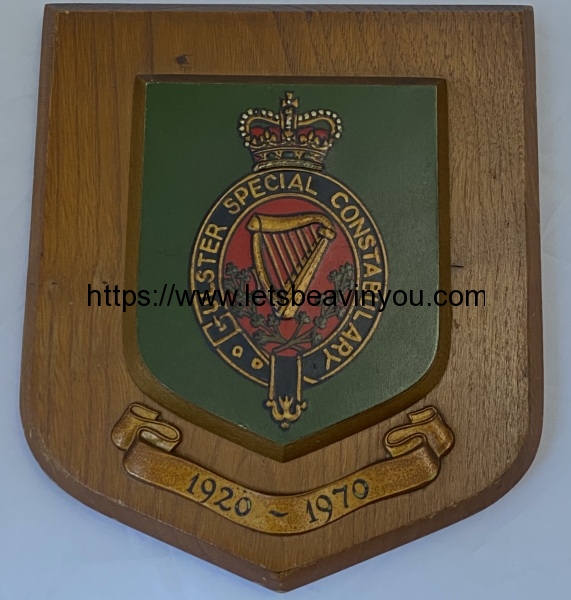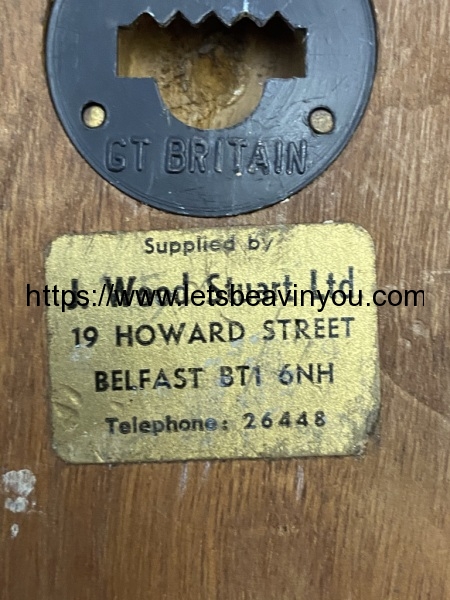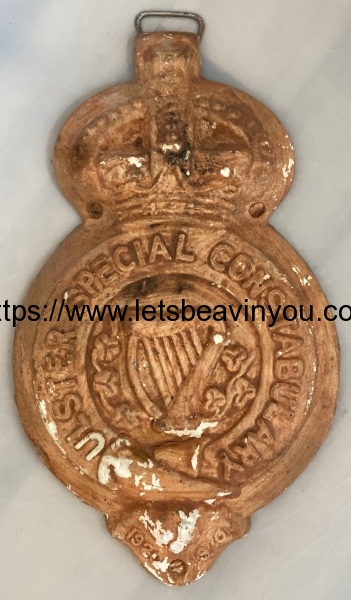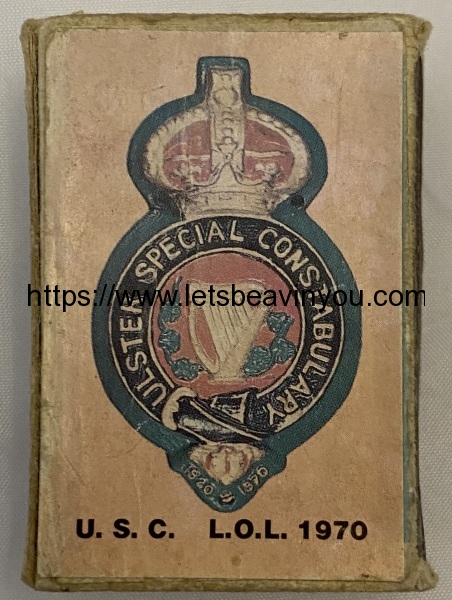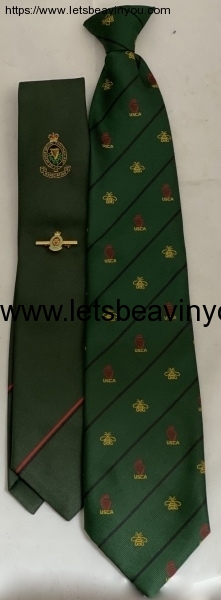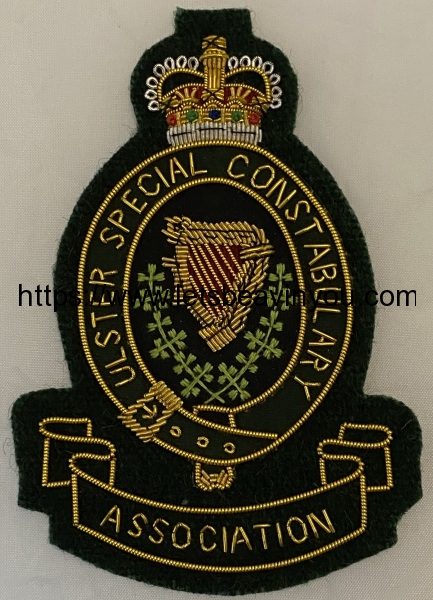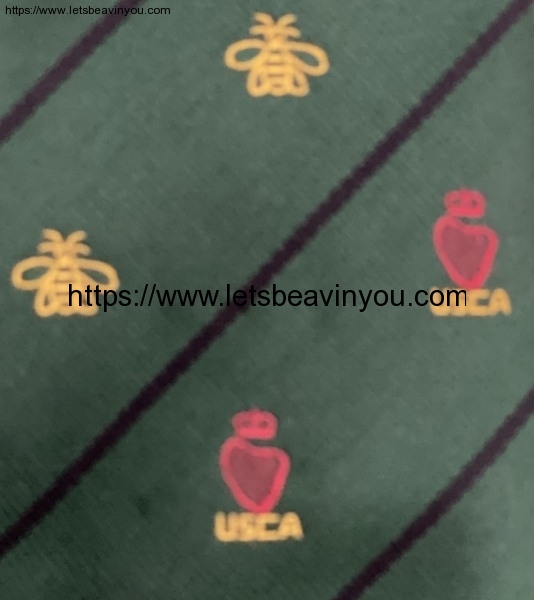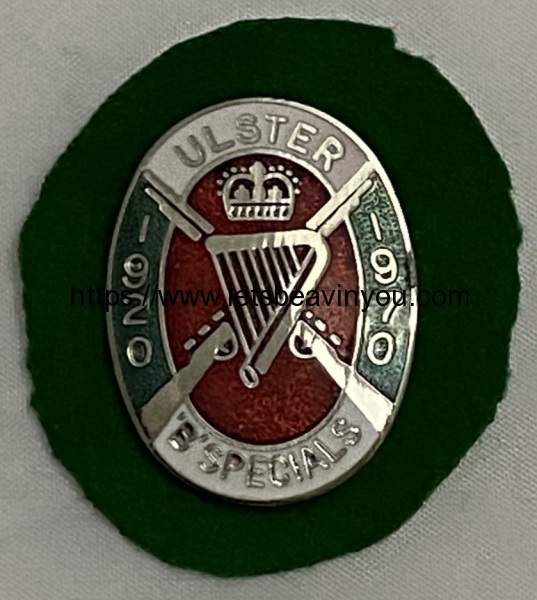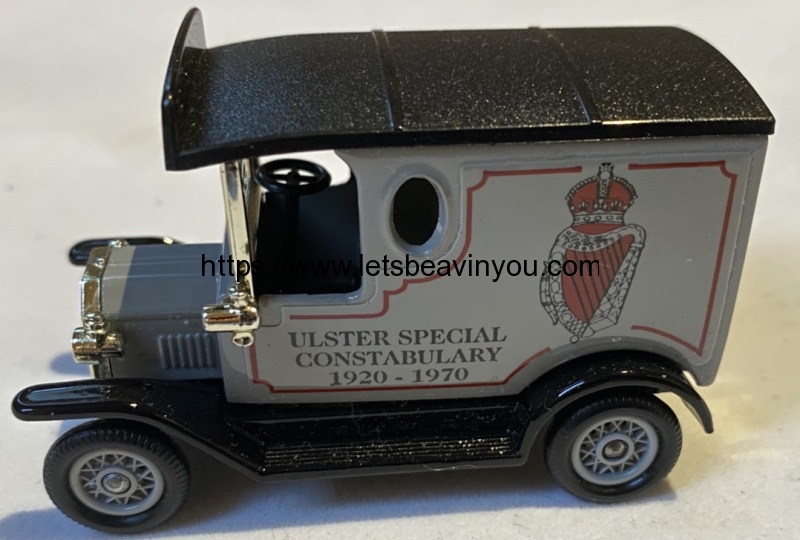The Special Constabulary was raised in the Northern Counties in 1920 as an aid to the RIC and became the Ulster Special Constabulary upon formation of the new State of Northern Ireland in 1922. They were organised in three classes: ‘A’ Specials who were a full time uniformed reserve force, ‘B’ Specials who were a part-time force and ‘C’ Specials who were an unpaid, non-uniformed body of more elderly men and generally served static guard duties.
Uniform was shared between the USC, the Reserve Force and the RUC over various periods, but generally the USC used older stock uniform, as indicated by the officers still having high neck tunics on disbandment in 1970. Given that there is overlap between the USC and the RUC there is inevitably a bit of overlap between items on this and other pages, but I try and point this out.
My earliest piece of Special Constabulary memorabilia is a lovely silver hallmarked service momento from the ‘B’ Class Special Constabulary 1921, awarded to Constable JS Taylor of Markethill Armagh. Given that the Specials were still part of the RIC at that time, it is also on my RIC page.
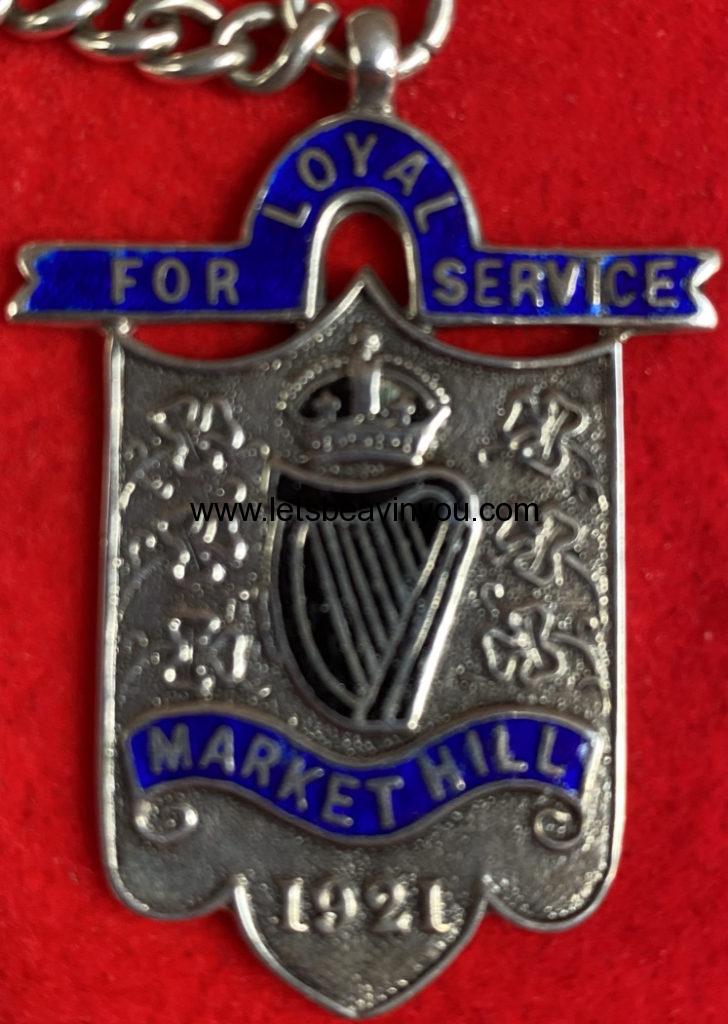
USC Paperwork
The Specials were expected to be mobilised at short notice and for that reason kept their equipment (including firearms) at home:
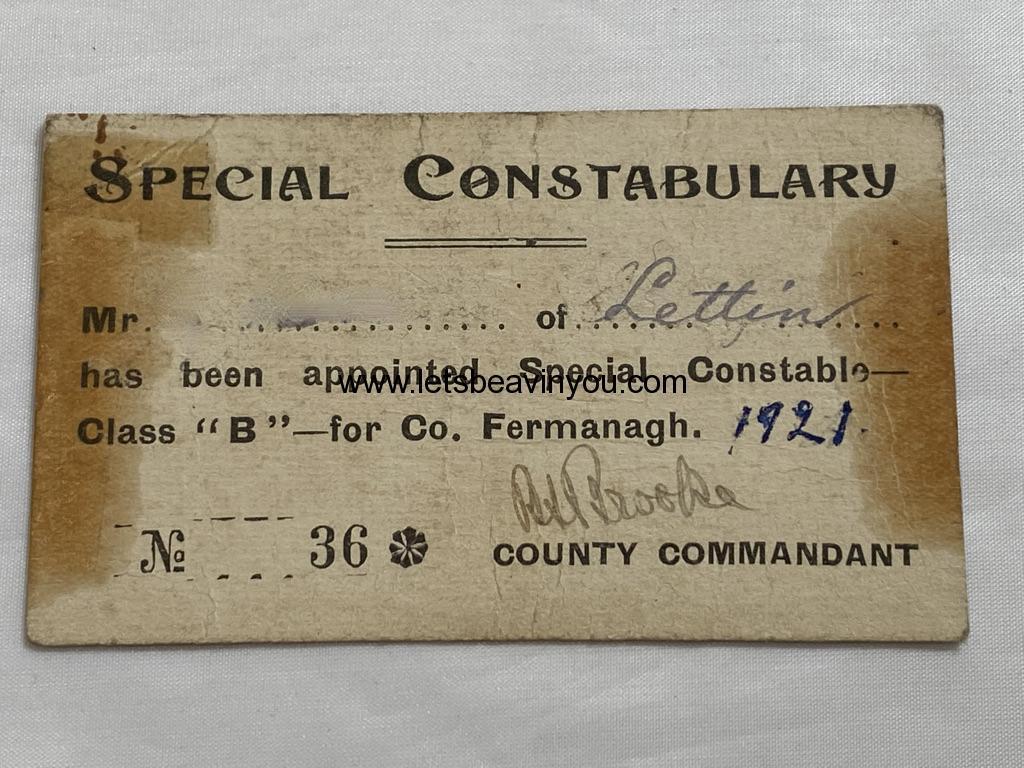
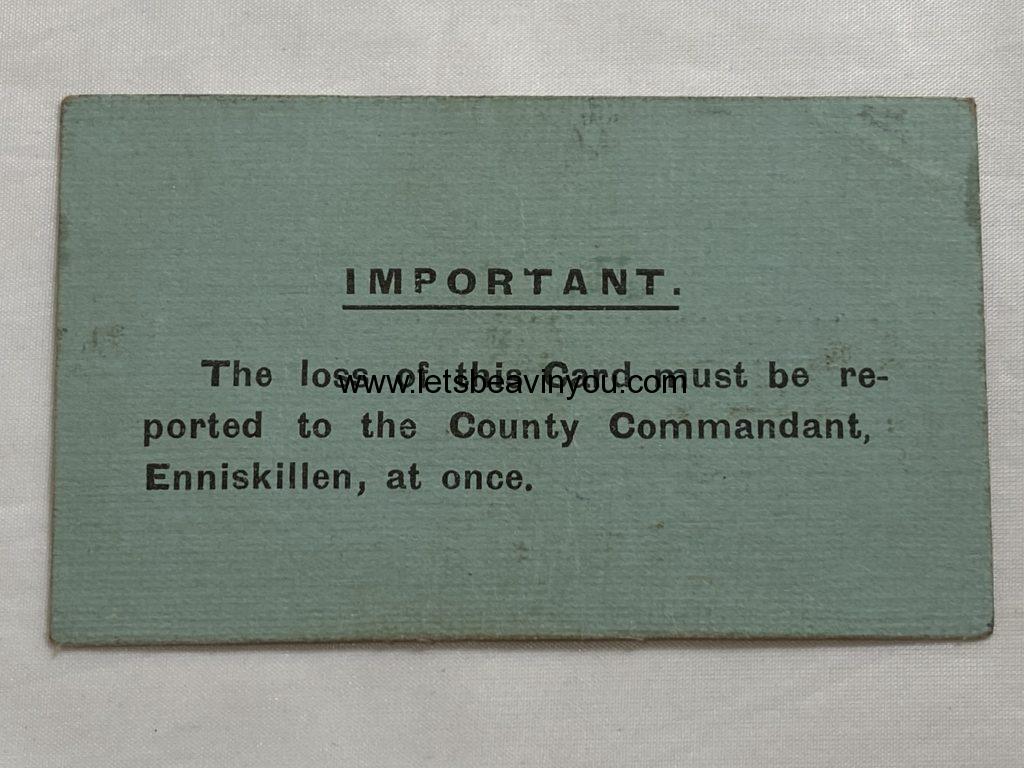
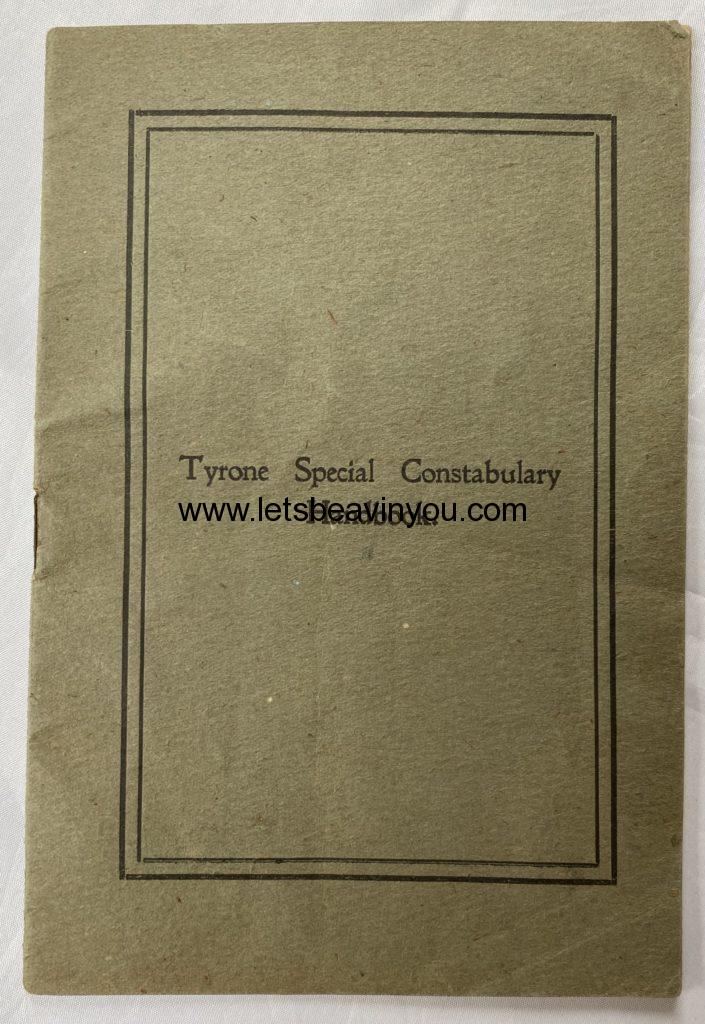

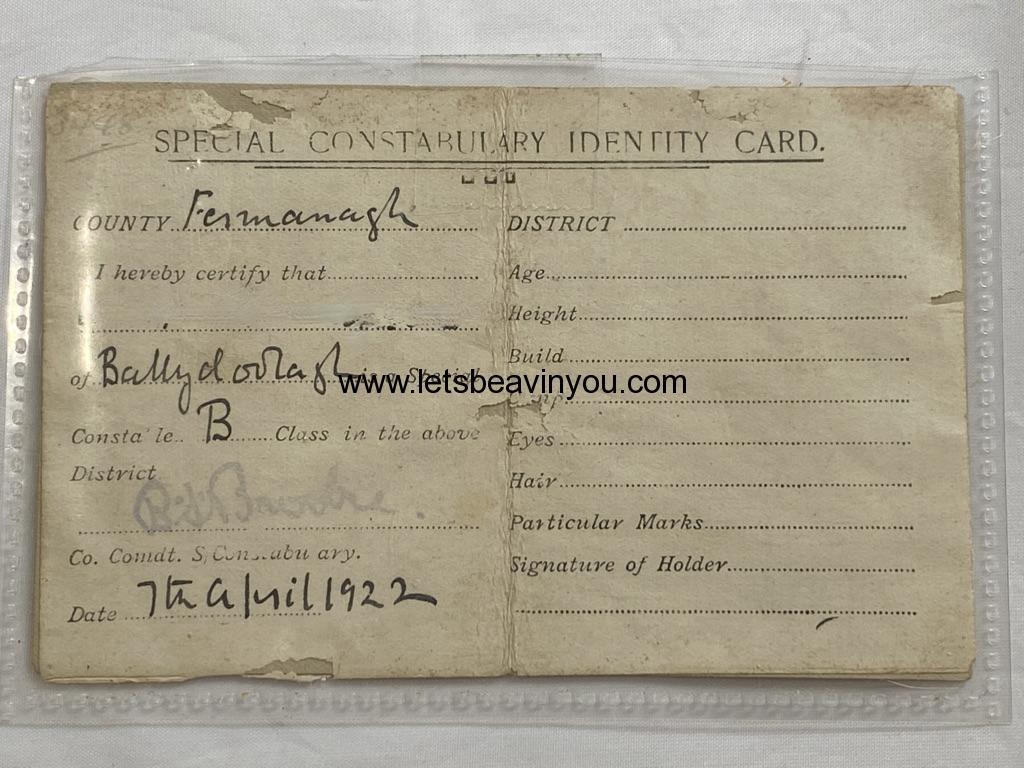
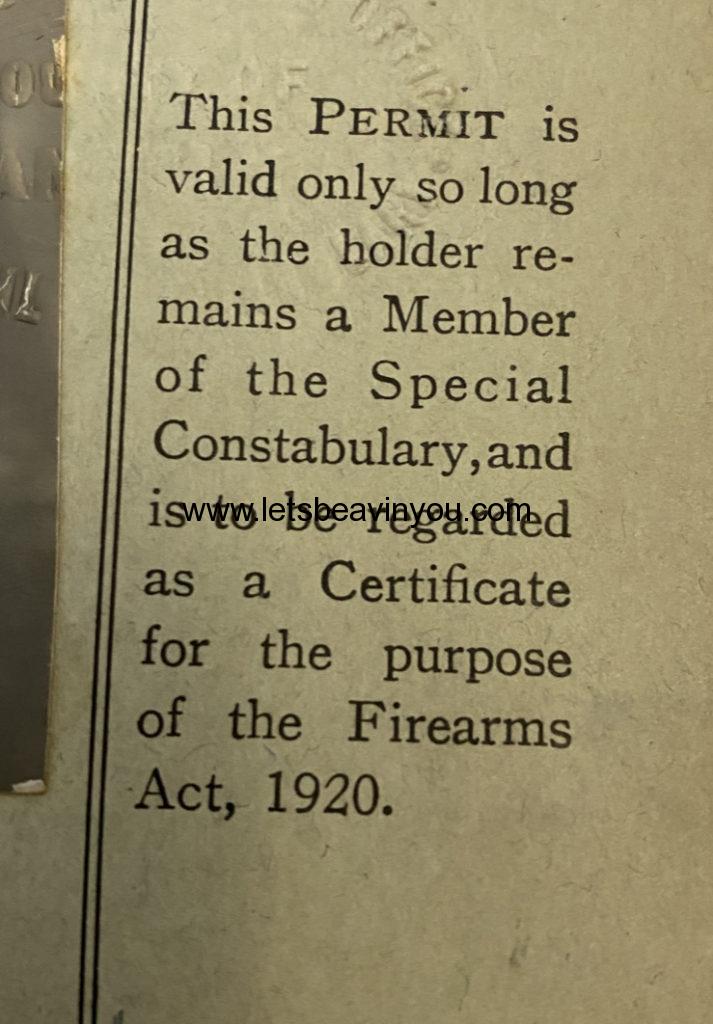

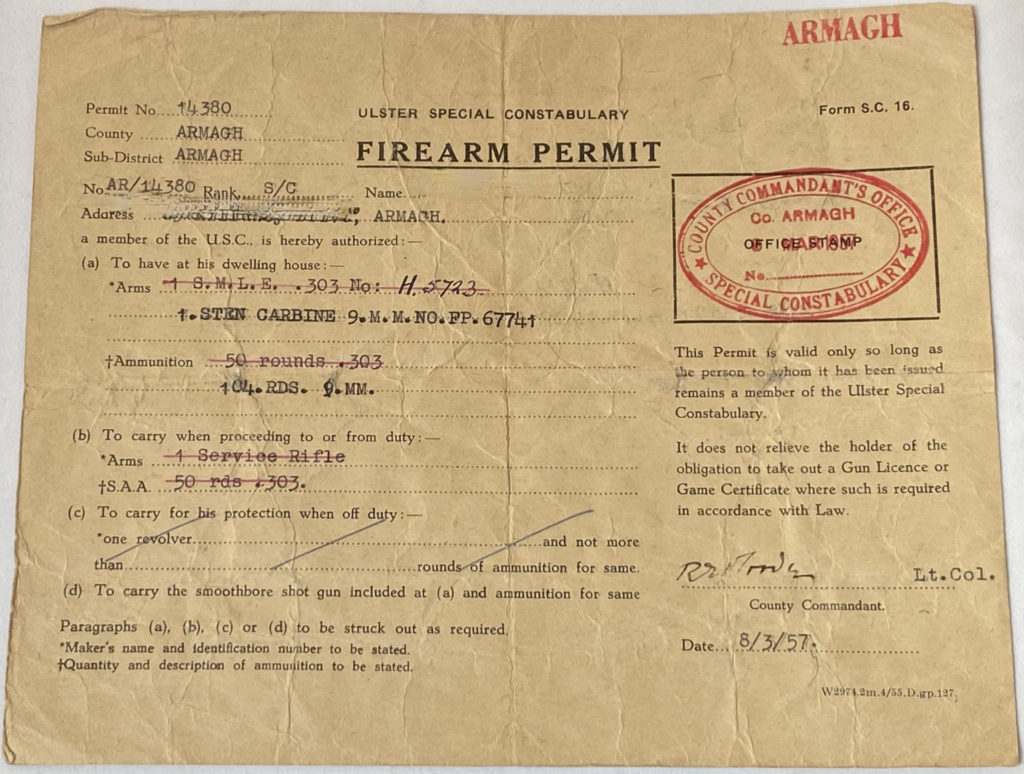
Skill at arms and field craft was the mainstay of training within the USC rather than normal police duties and they held regular camps and competitions to keep up their skills. The USC was organised along county lines, alongside the Boroughs of Belfast and Derry, with each having a County Commandant in charge and a seperate HQ function from the RUC. Likewise, the rank structure set them apart:
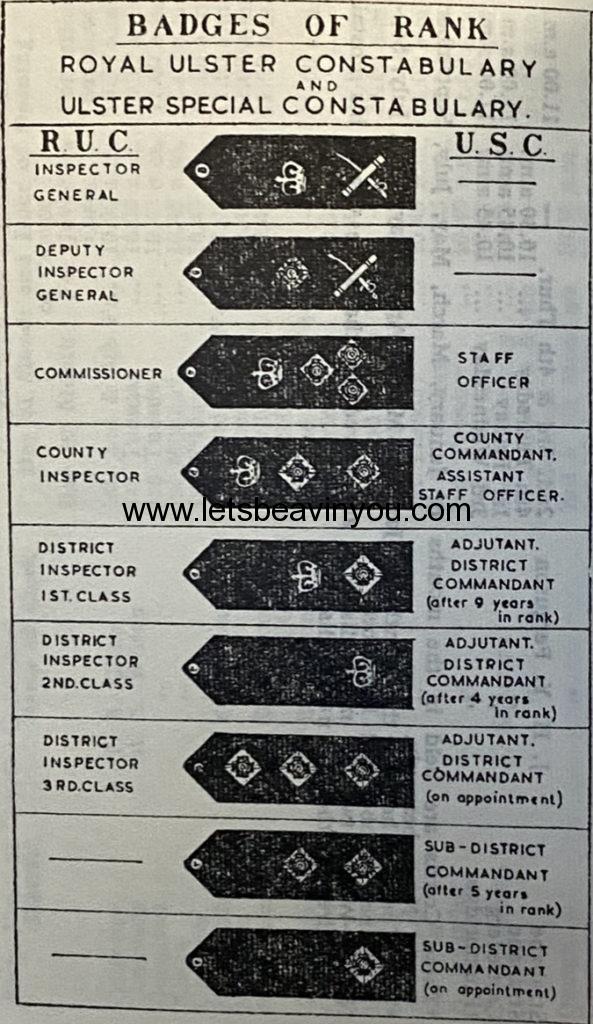
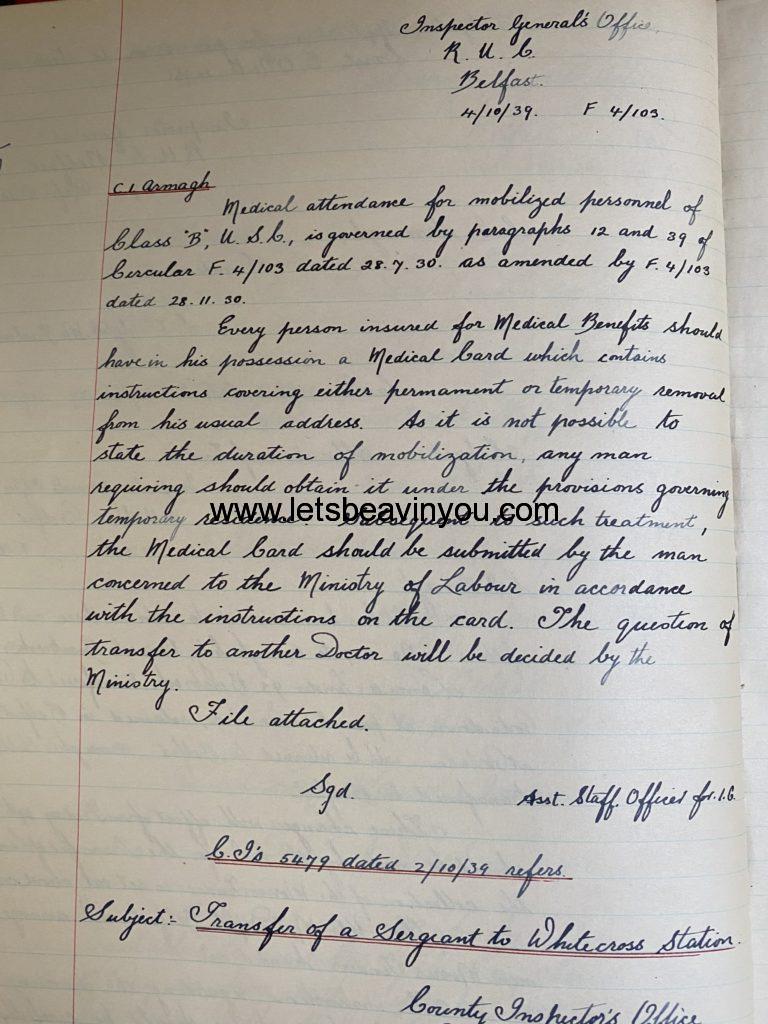
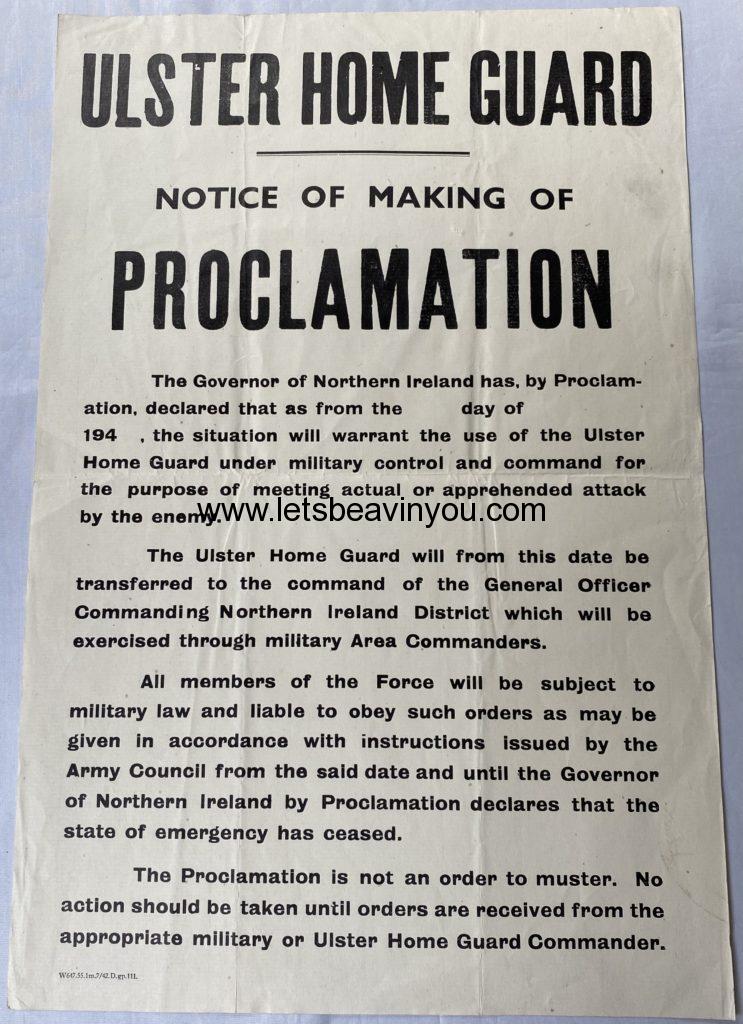
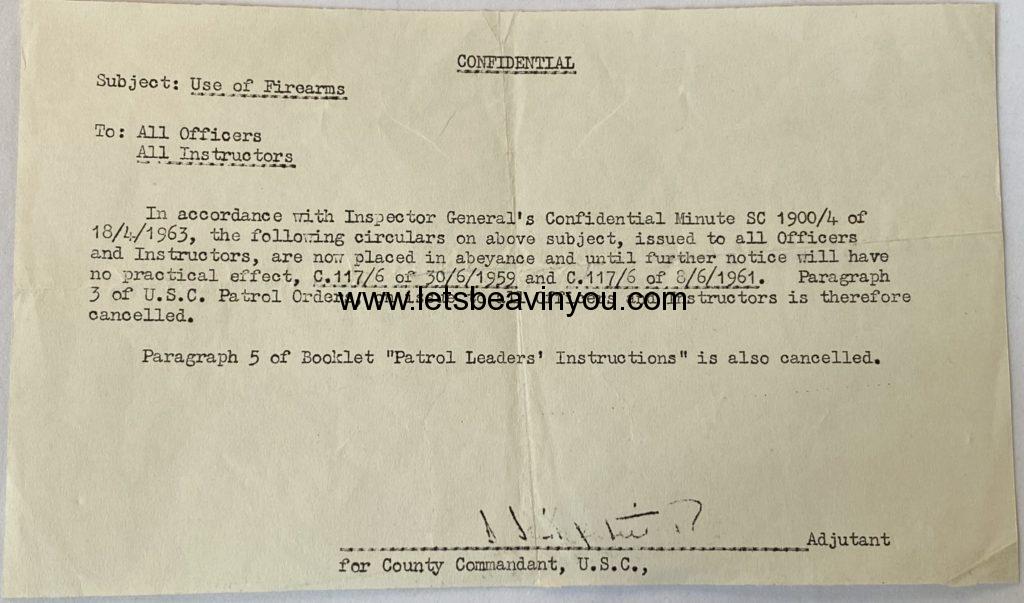
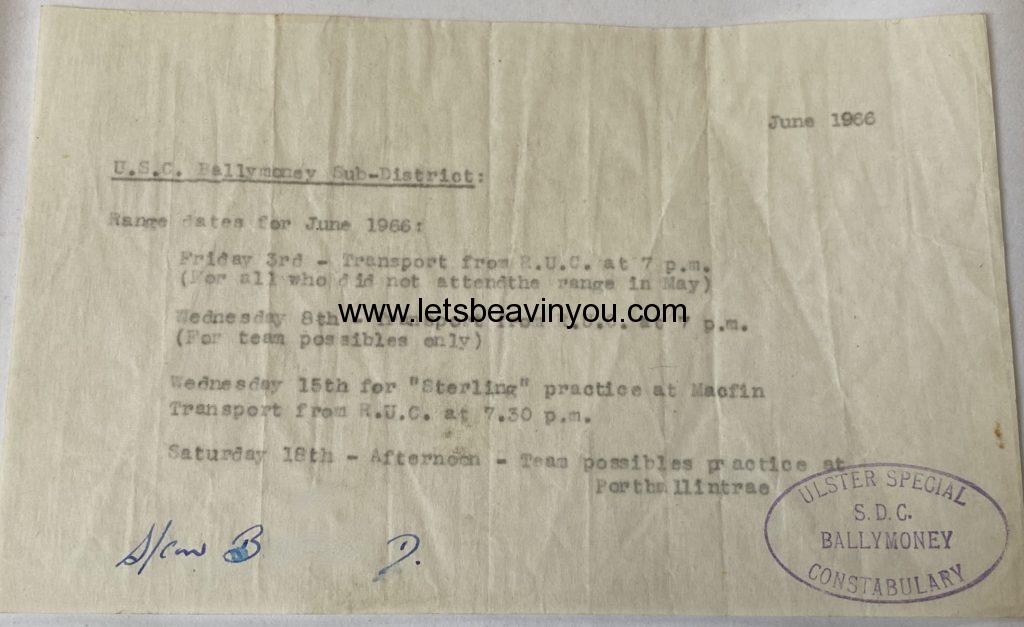
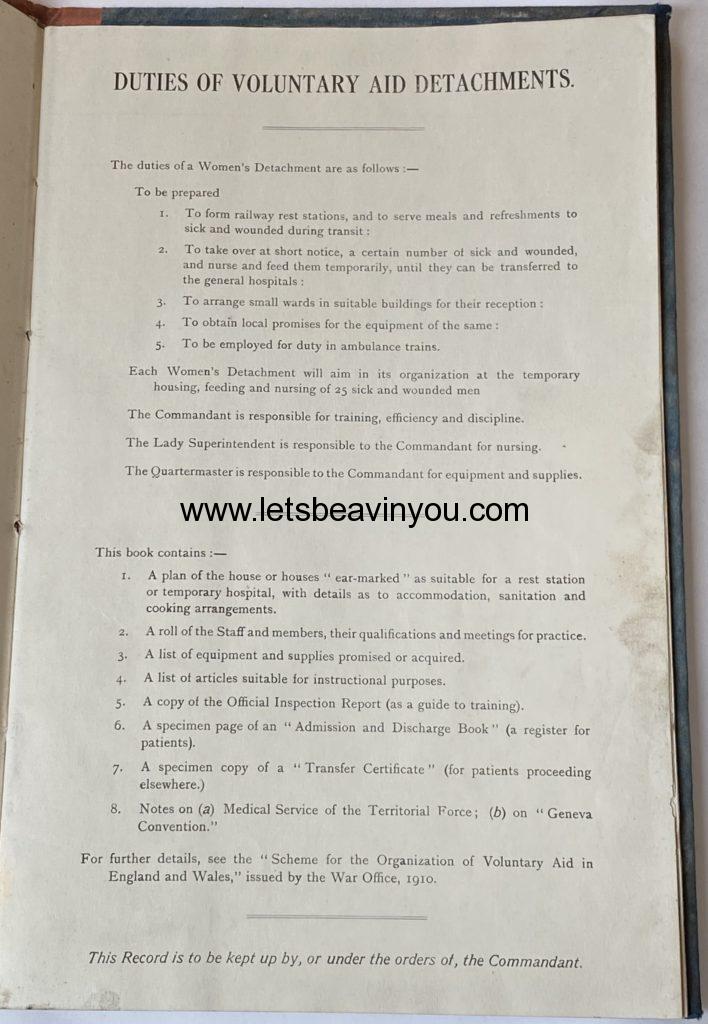
In keeping with the social customs of the day, Special Constabulary members were expected to attend dinner dances, even during wartime.
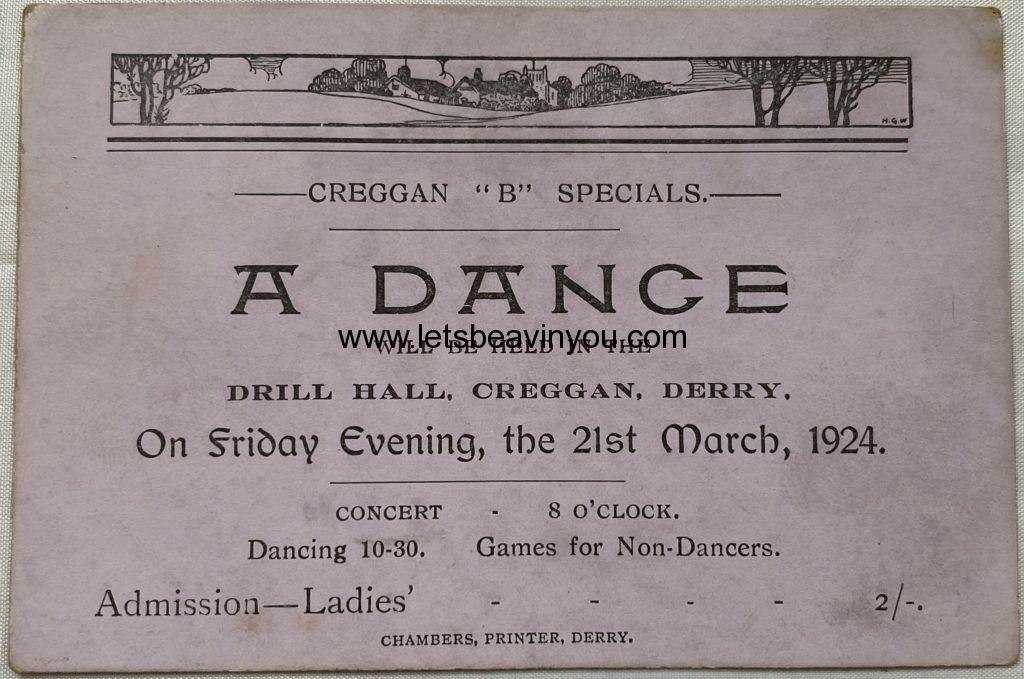
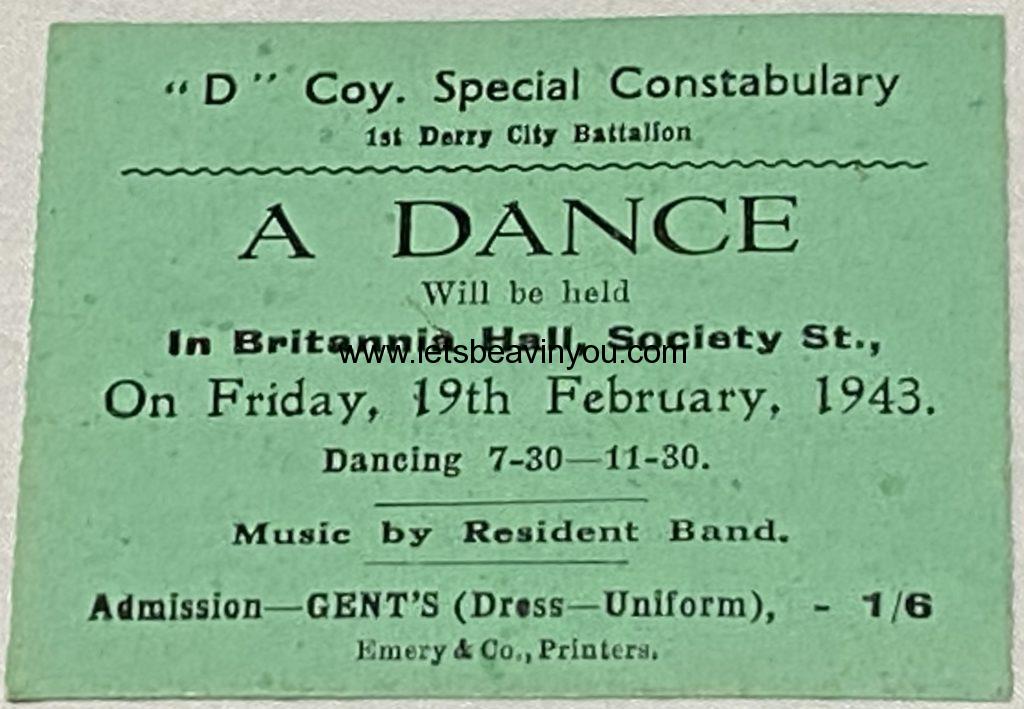
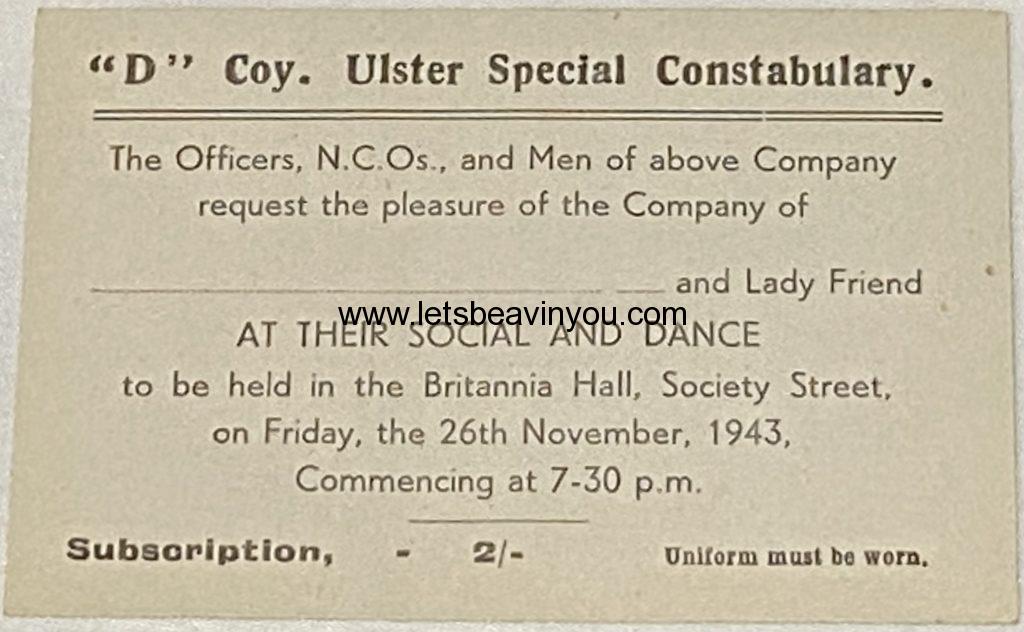
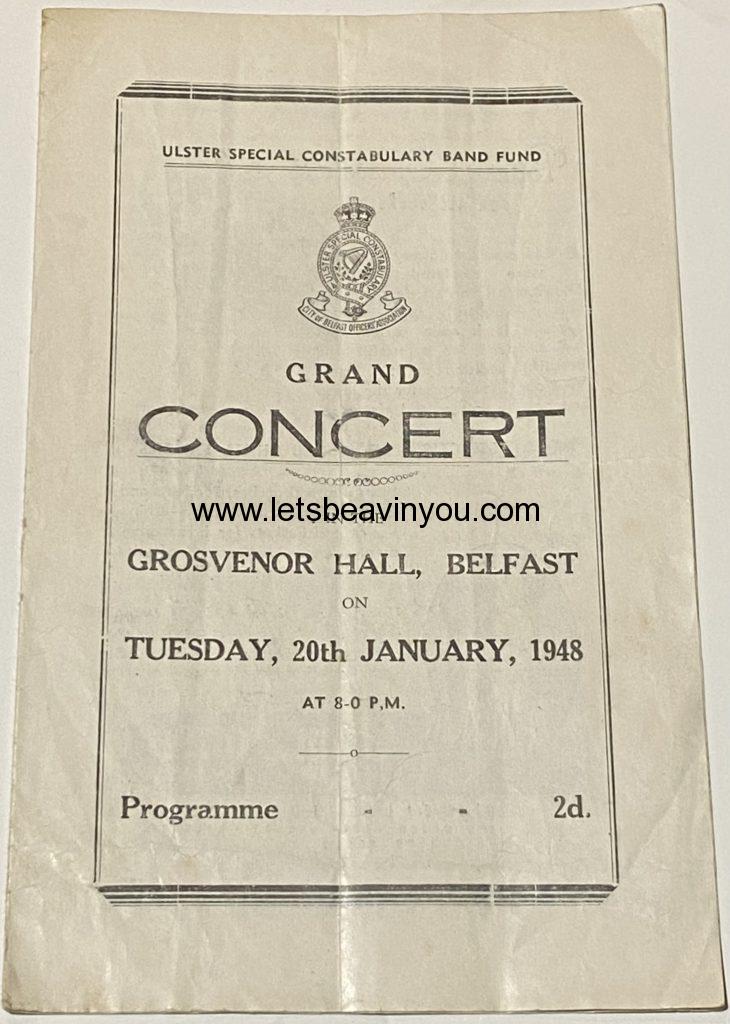
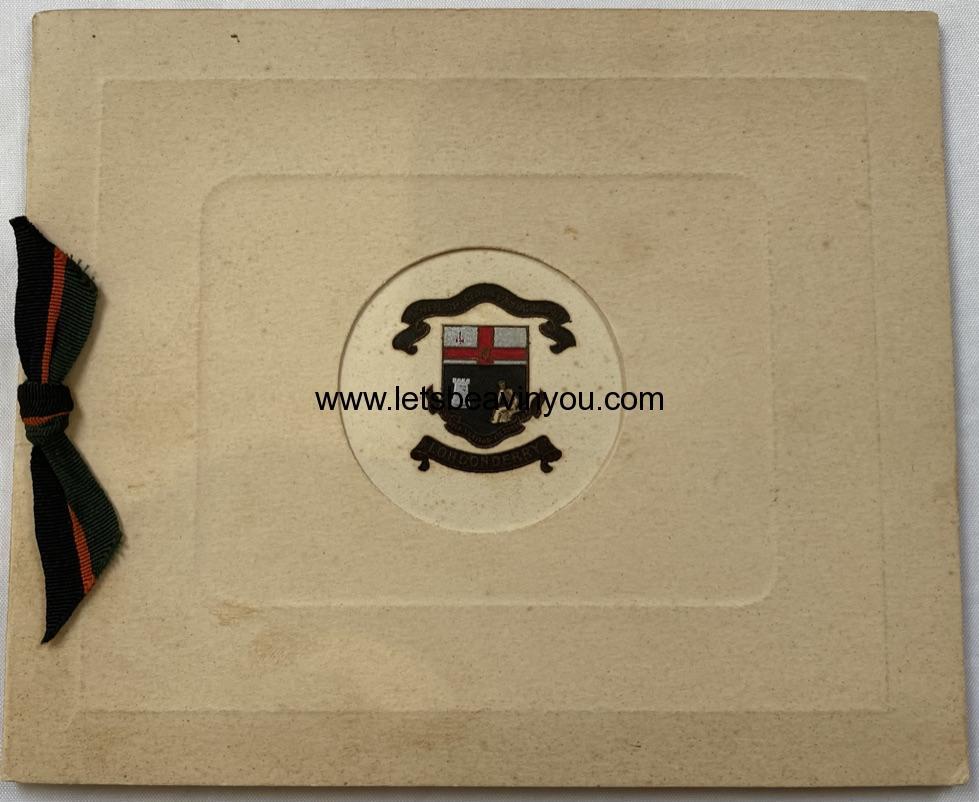
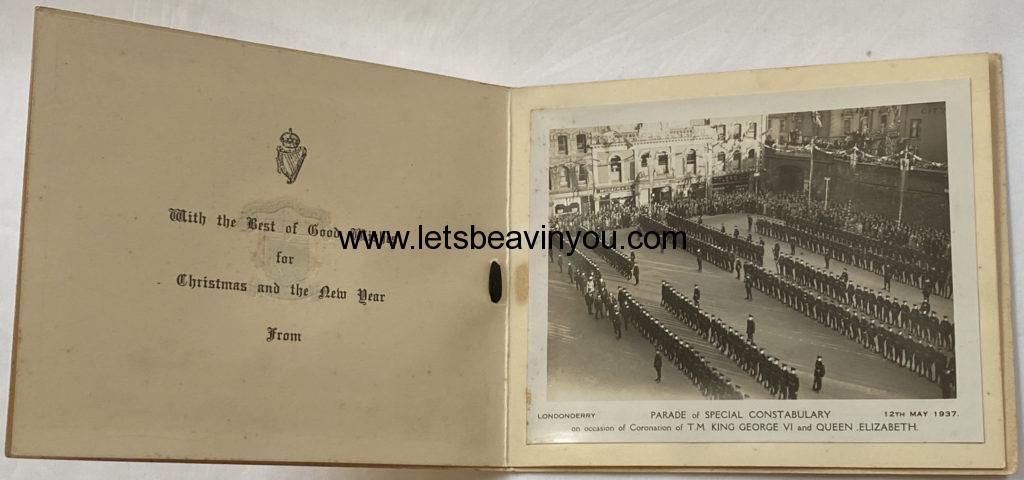
Competition Medals
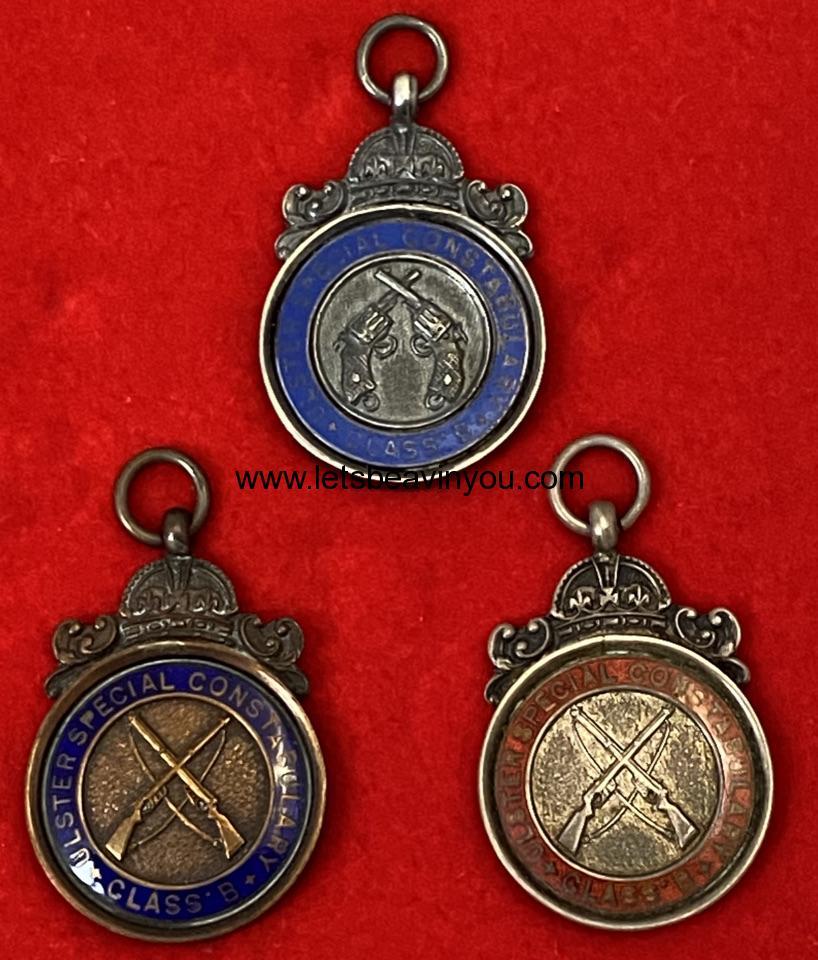
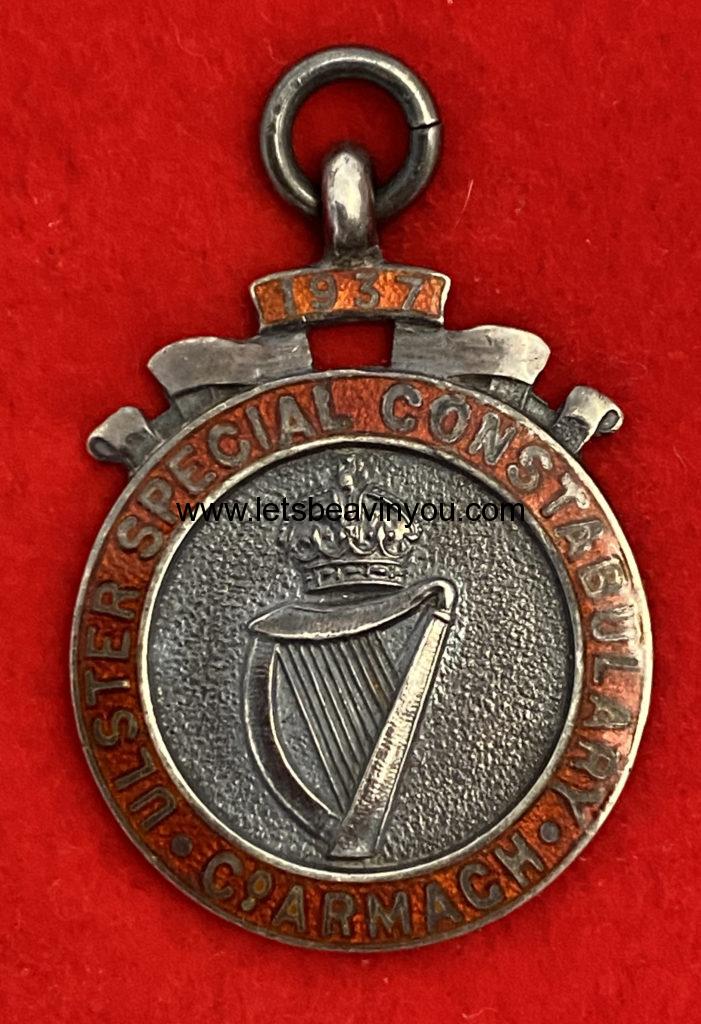
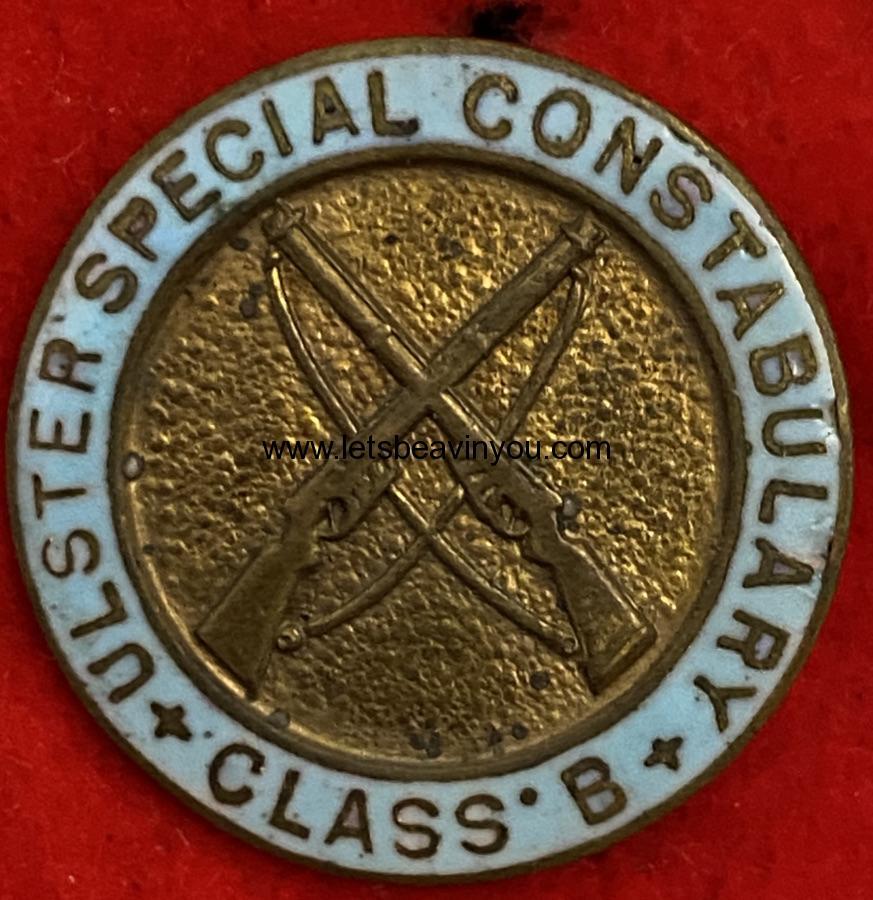
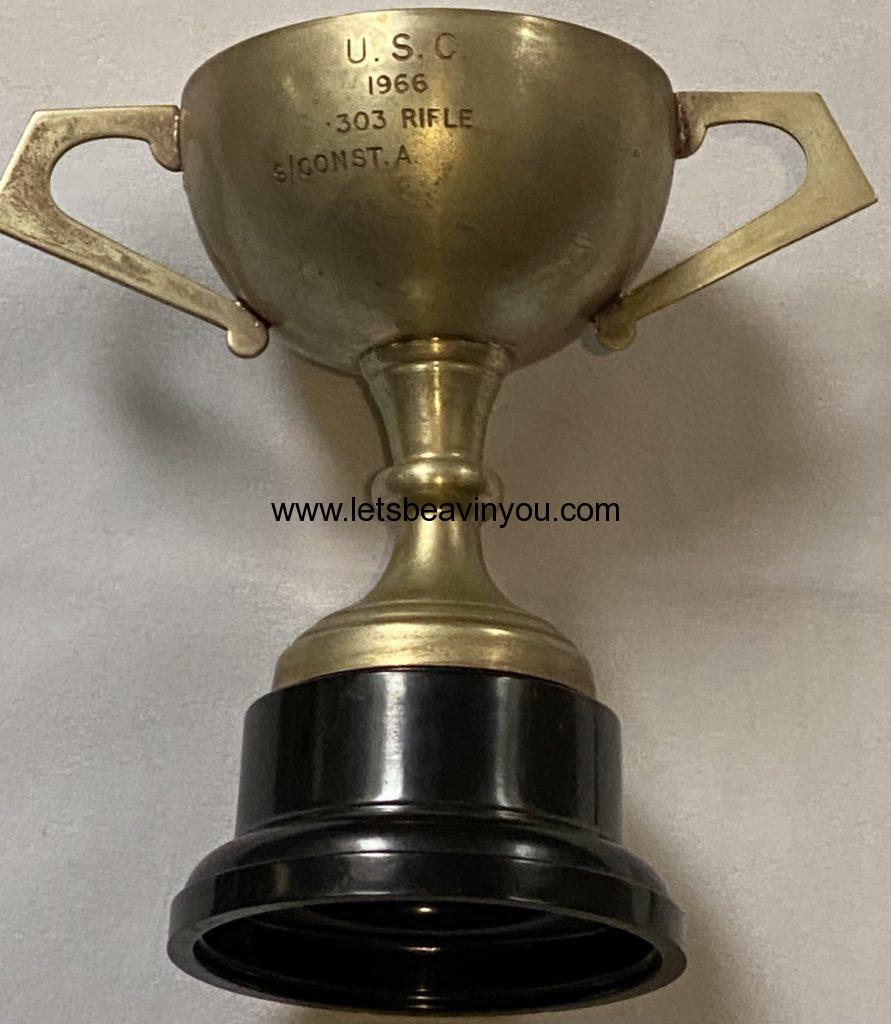
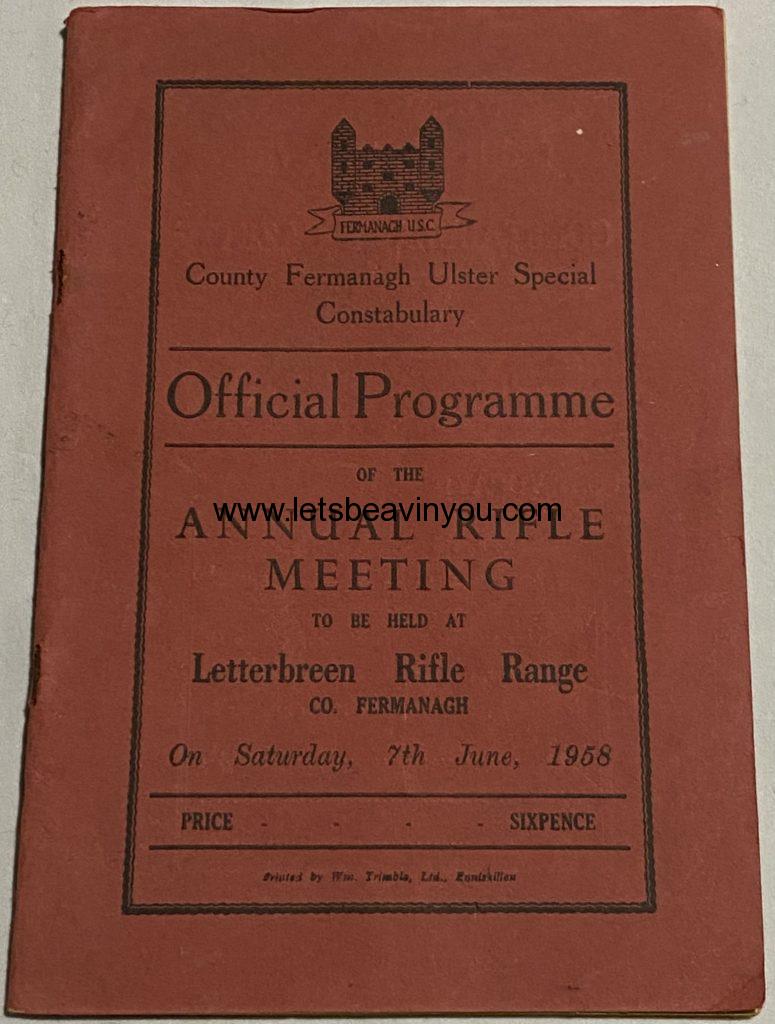
USC Wooden Training Rifle
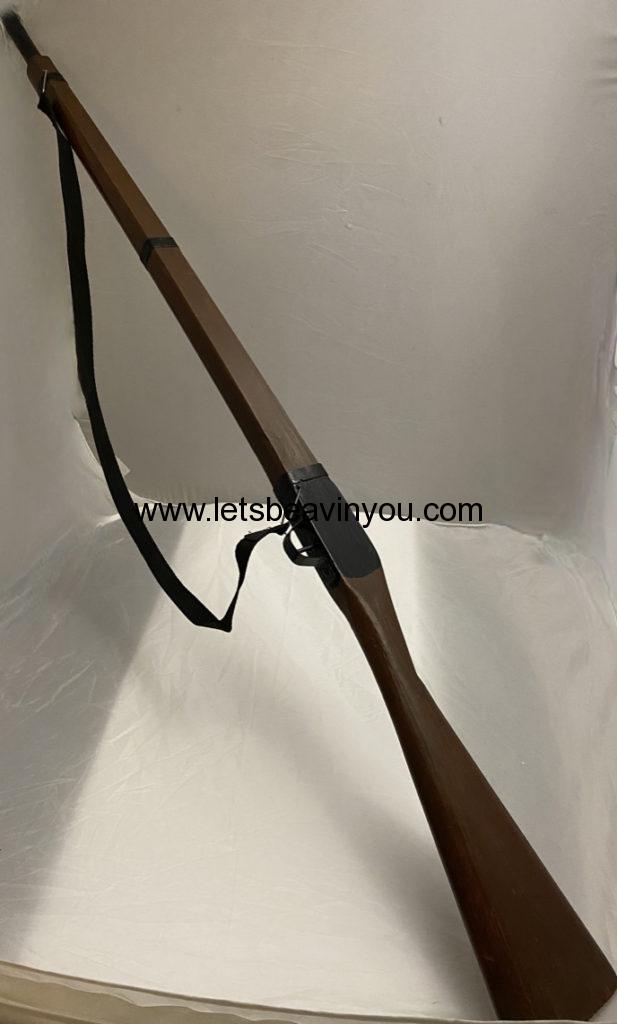
Uniform, Badges and Insignia
As noted above, the USC wore uniform and carried insignia that was similar to that of the RUC, albeit they did not immediately follow changes in RUC uniform, no doubt for reasons of efficacy. For this reason it is sometimes difficult to tell them apart. This first example of a Constables hat could potentially be RIC, RUC or USC. The use of an RIC badge is not much help given their interchangeability and it was not until the 1950s that it is easier to tell them apart. The second example is definitely younger, albeit the cap could be from the 1940s, with the then new Queen’s Crown badge affixed.
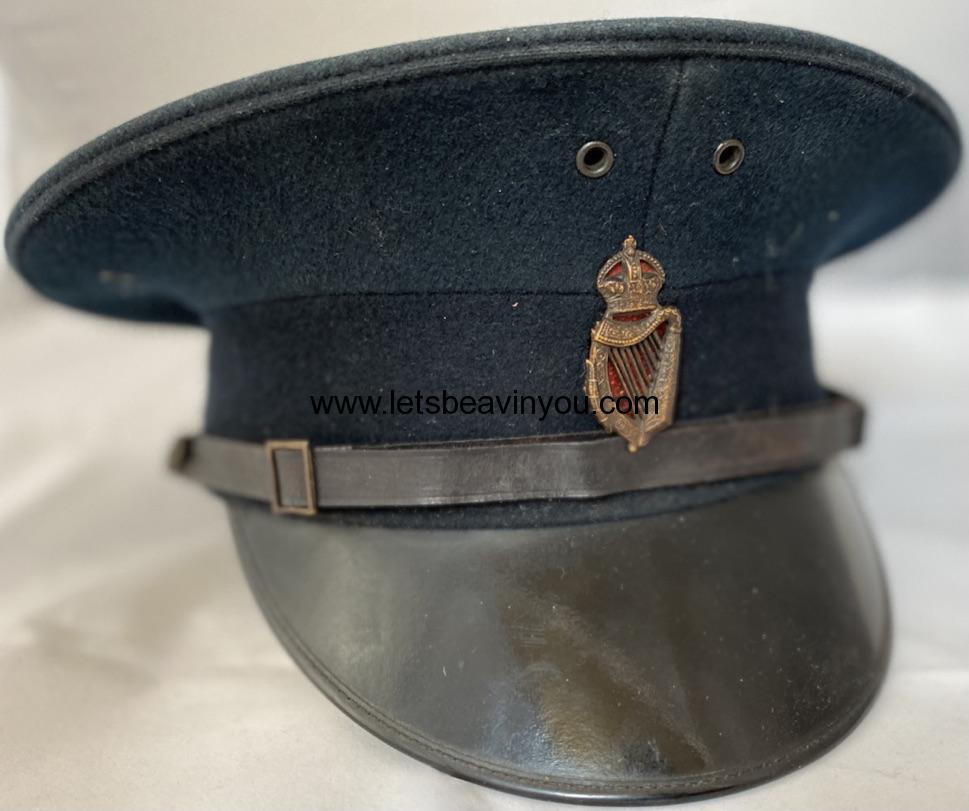
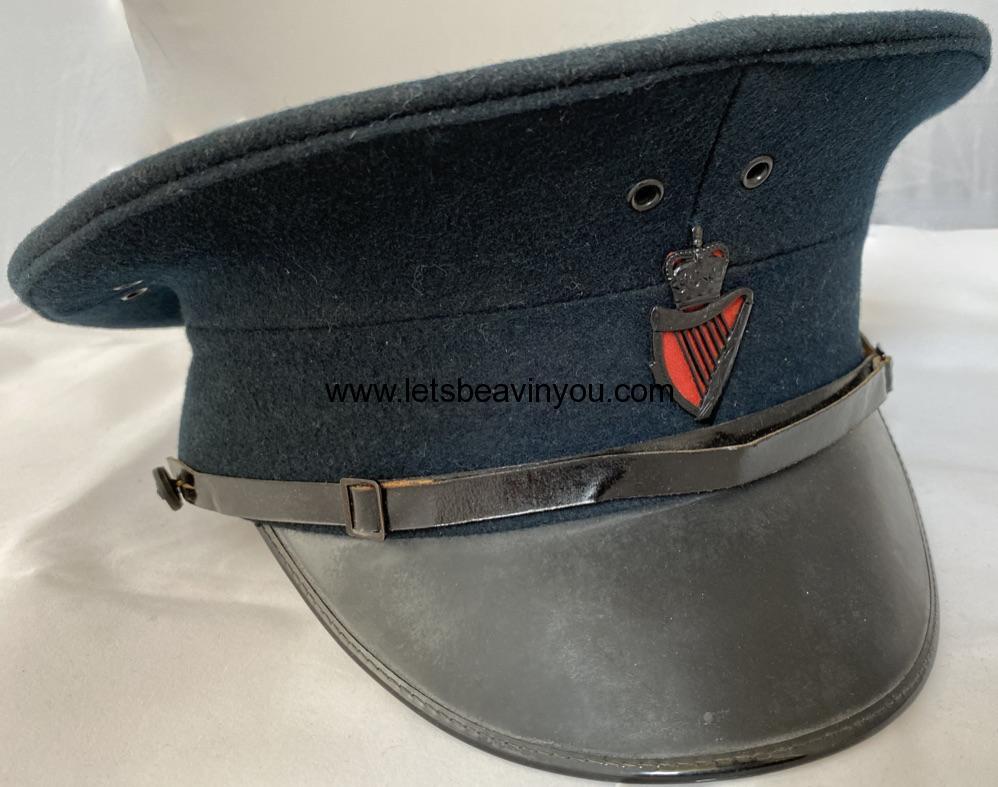
The cap below is without doubt, USC. The band indicates an officer, but looks to have an English pattern oakleaf band rather than the usual shamrock. Not sure if this indicates a fake, or it was just a handy fix at the time. Either way, by this time senior officers in the RUC had adopted the final issue cap badge (prior to its universal adoption in 1971).
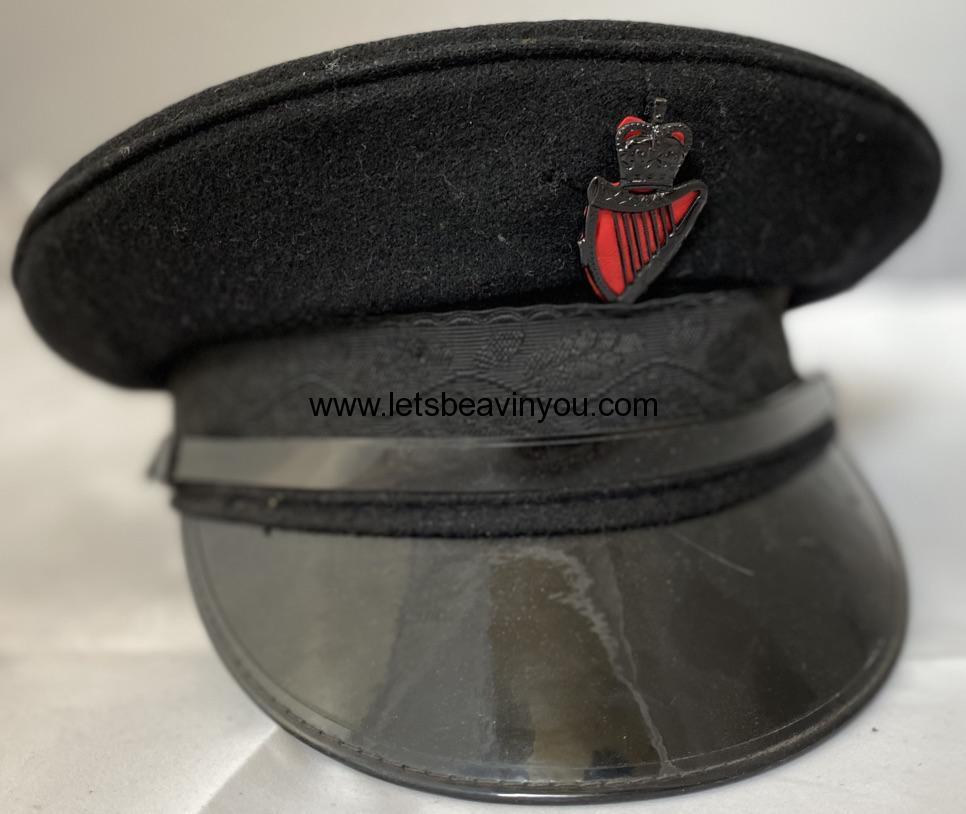
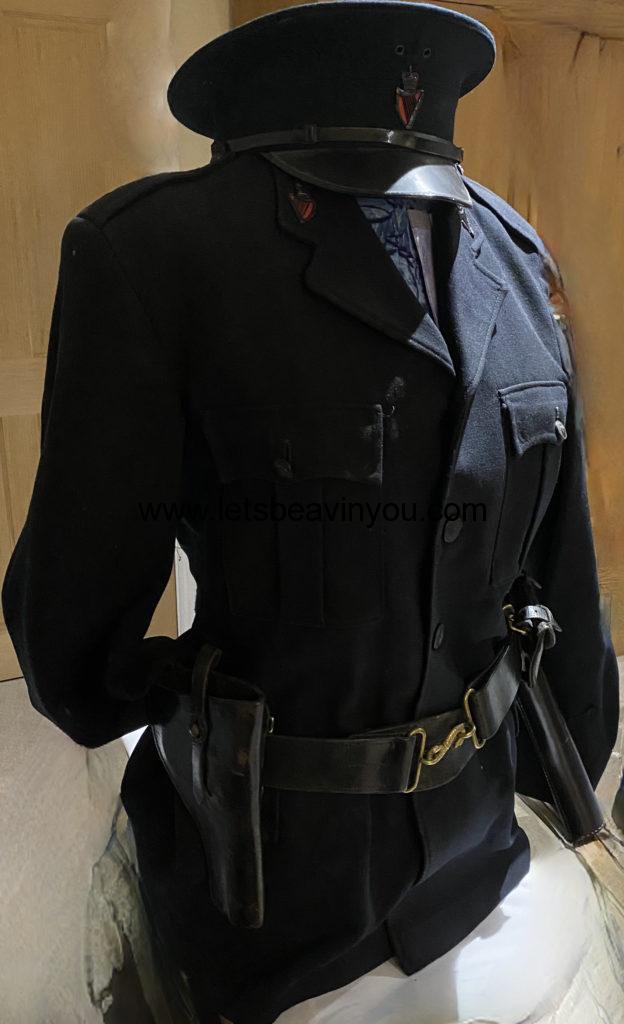
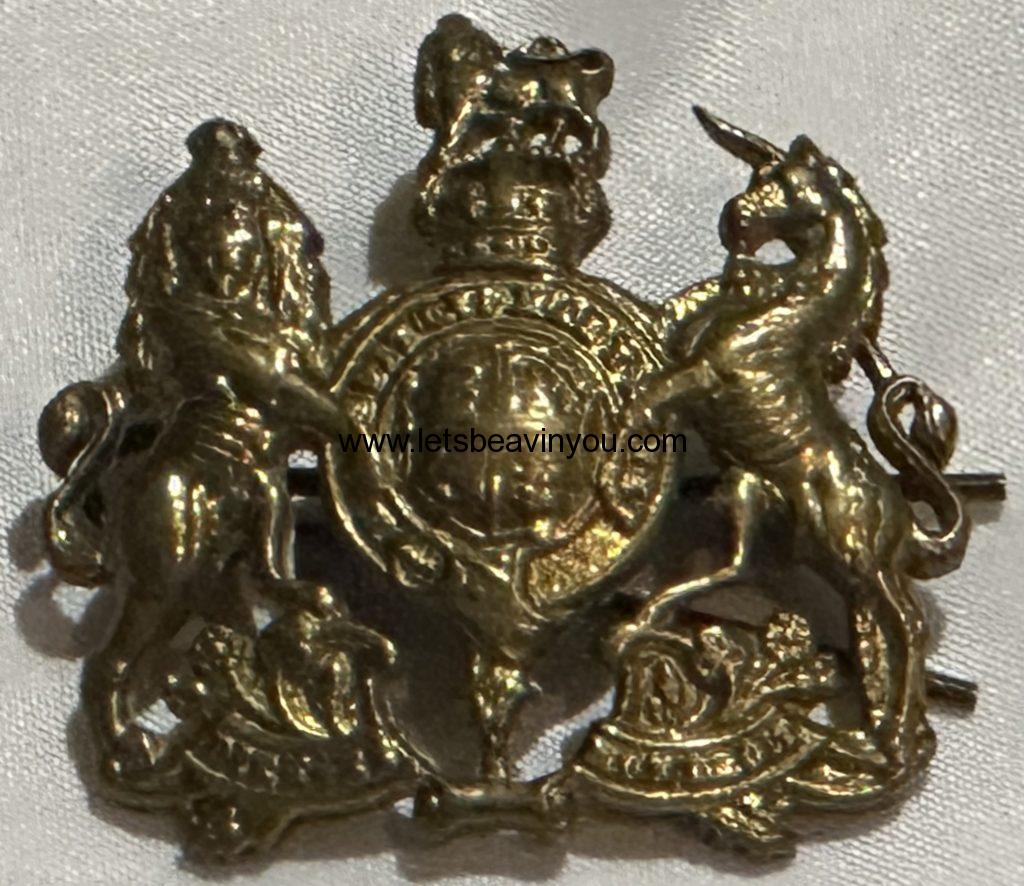
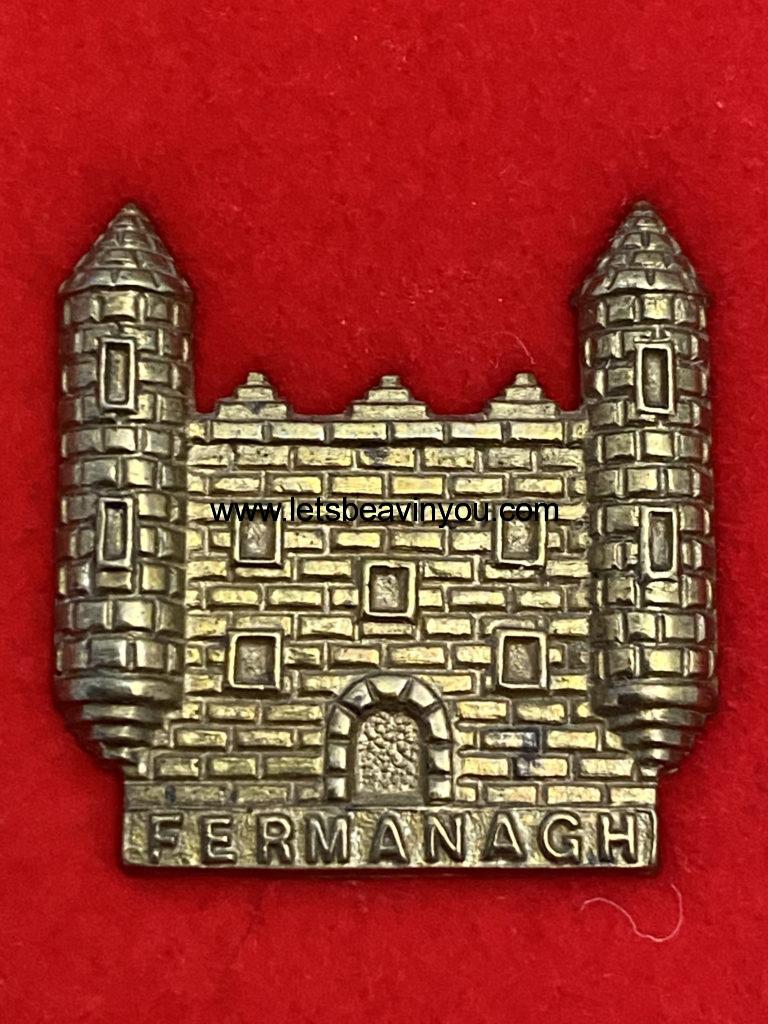
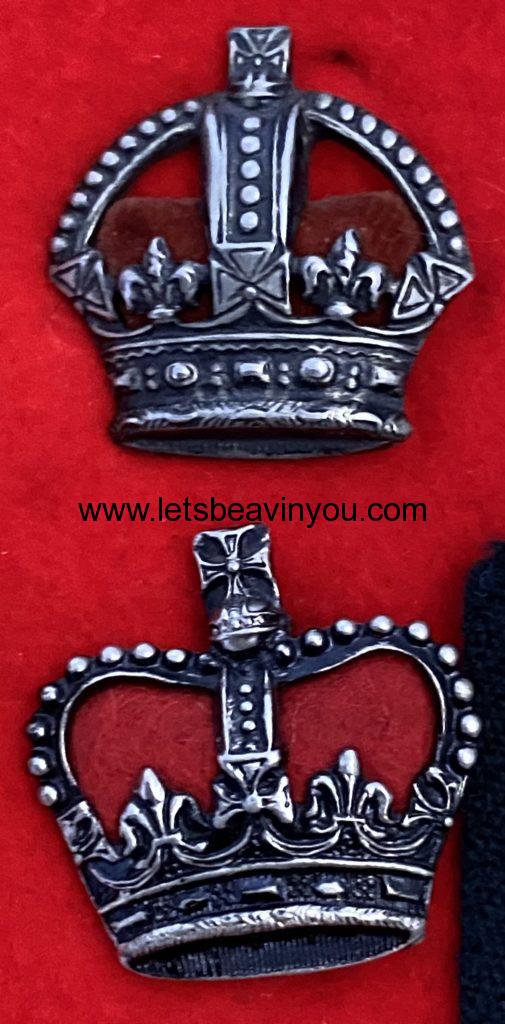
I’m not aware of epaulette or collar badges issued for the Co Down or Antrim USC, but the missing set is the interlocking GG of the Governor’s Guard, which was a special USC detachment that protected Hillsborough Castle, the then royal residence of the Governor of Northern Ireland. I’ve only ever seen one example which was sold on eBay for just over £500 for one of what should have been a pair.
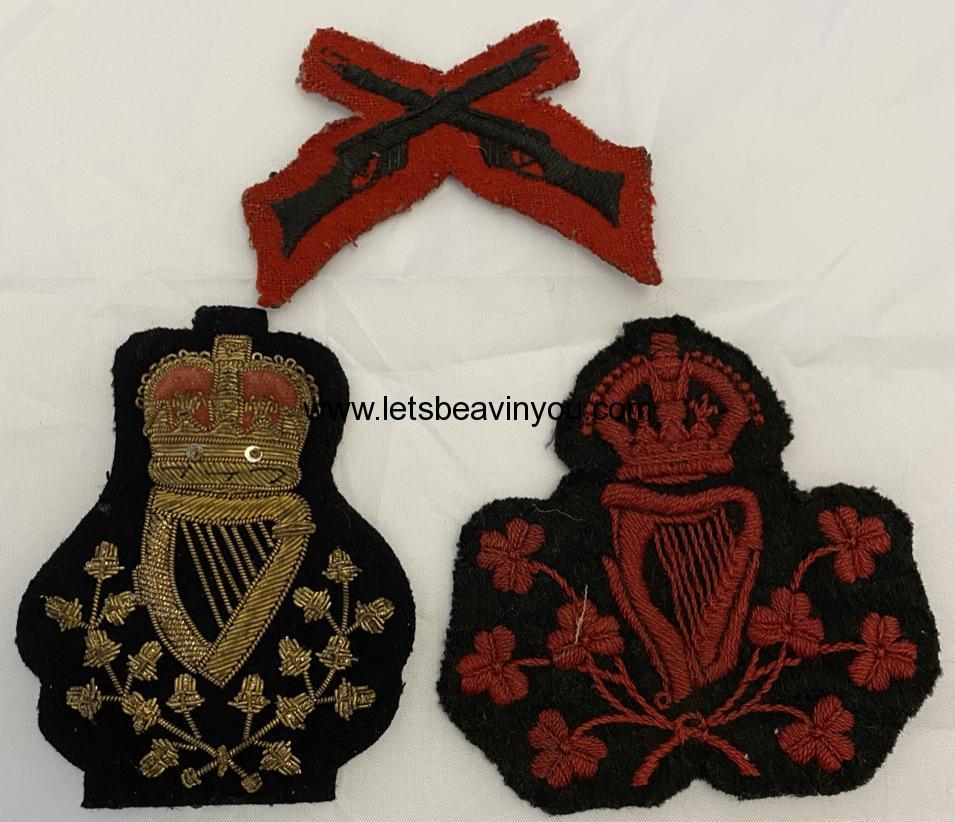
Above, a Head Constable’s tunic insignia (worn on the lower right sleeve) and in red, the same for a Greatcoat.
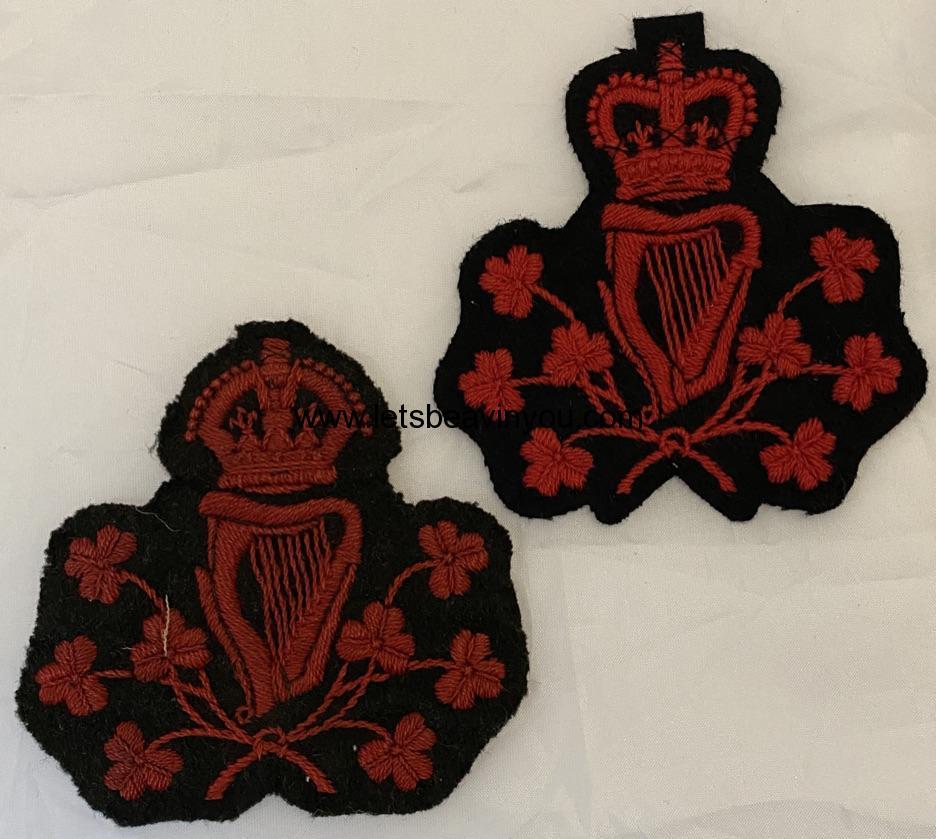
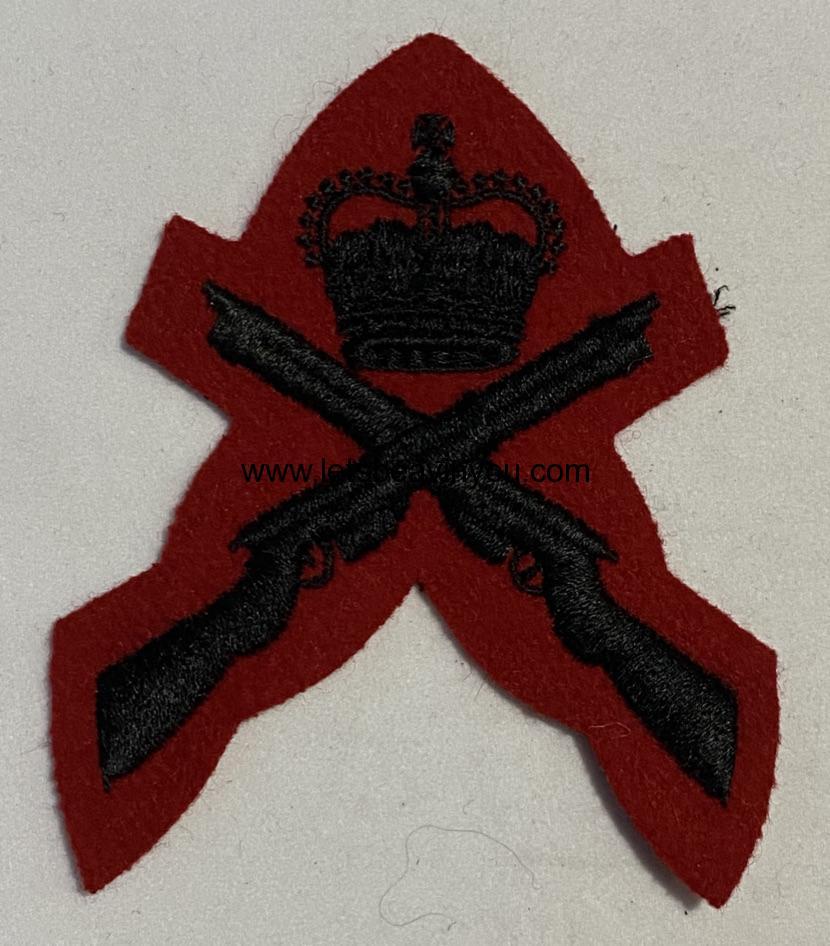
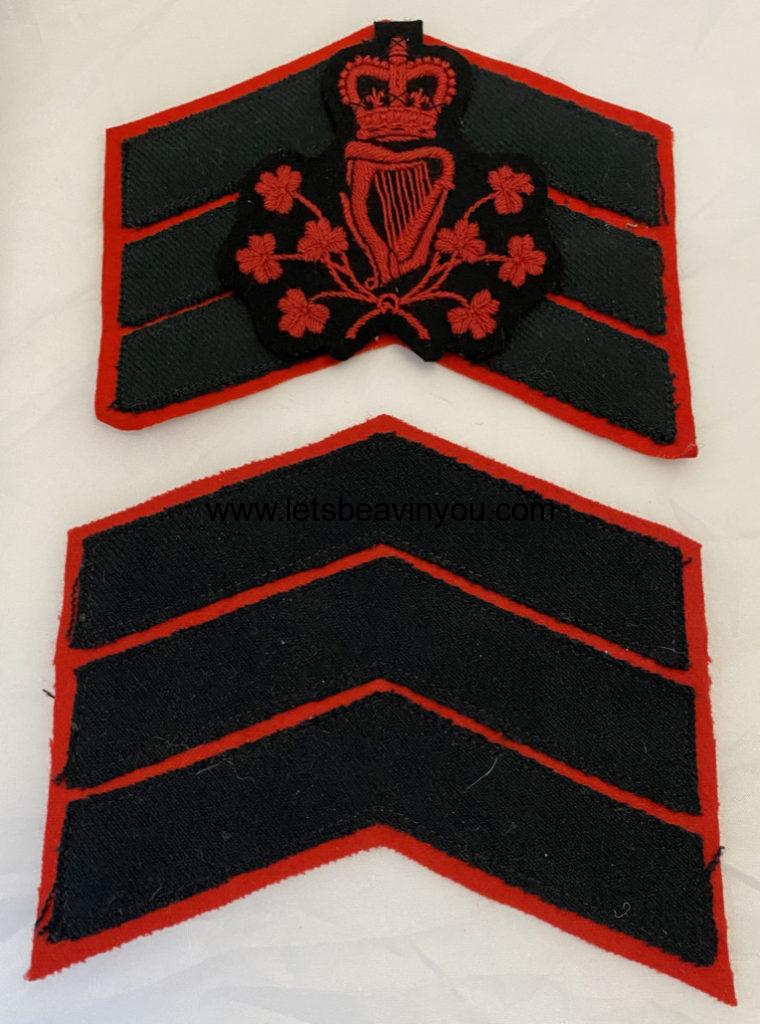
Ephemera
This section is a mishmash of curios that, hopefully, speak for themselves.
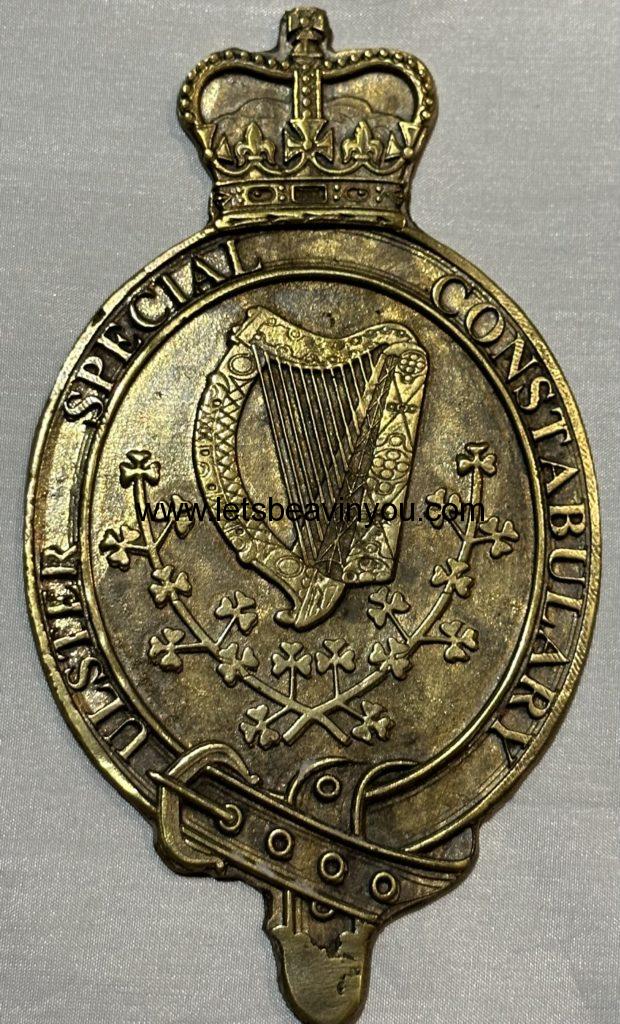
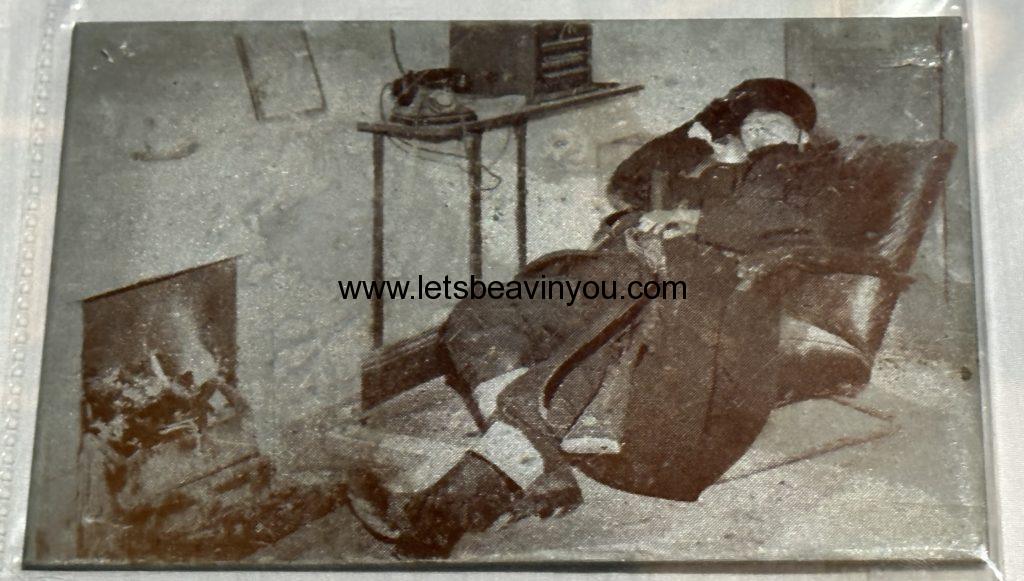
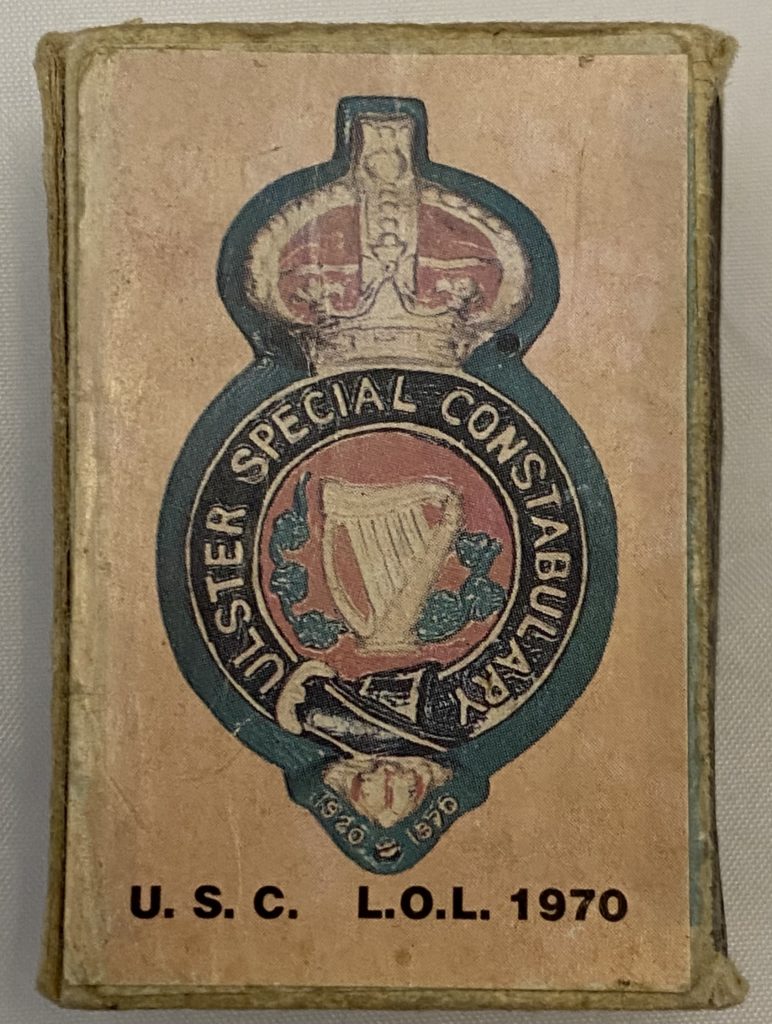
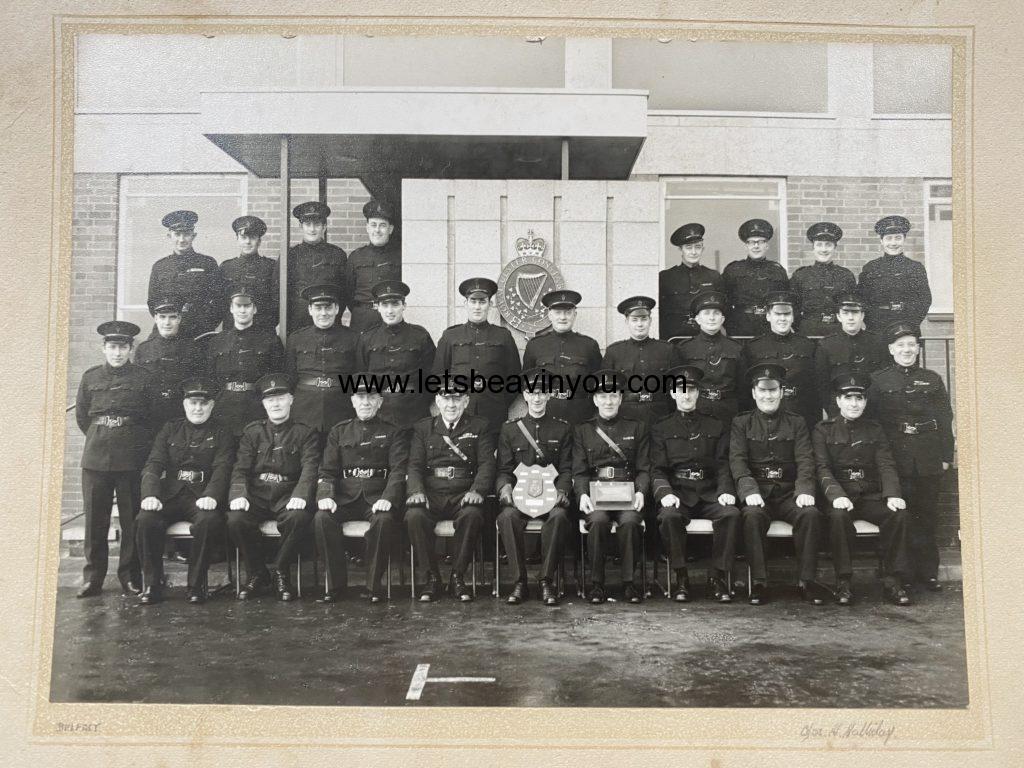
Disbandment
The disbandment of the USC in 1970 was one of the central recommendations of the 1969 Hunt Report. The majority of active members transferred to the newly formed Ulster Defence Regiment and the USC Association was formed. The USCA produced a limited range of commemorartive plaques in the style of the old RIC Station Badge, as well as other ephemera. The Northern Government also chose to write to each man to thank them for their service:
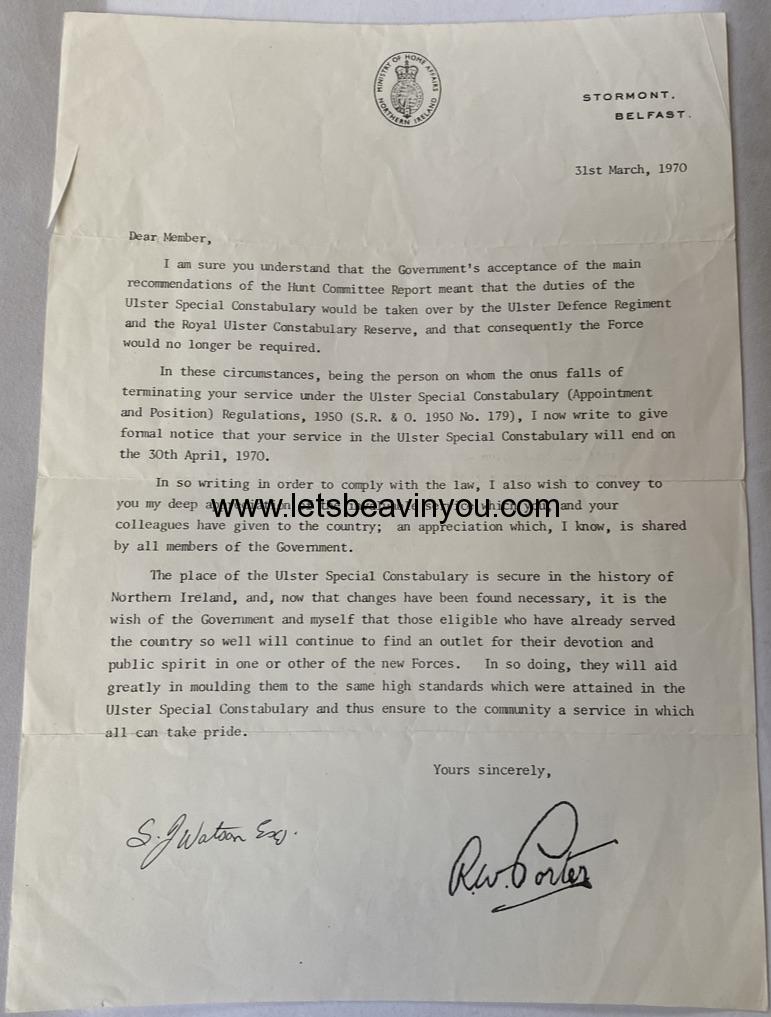

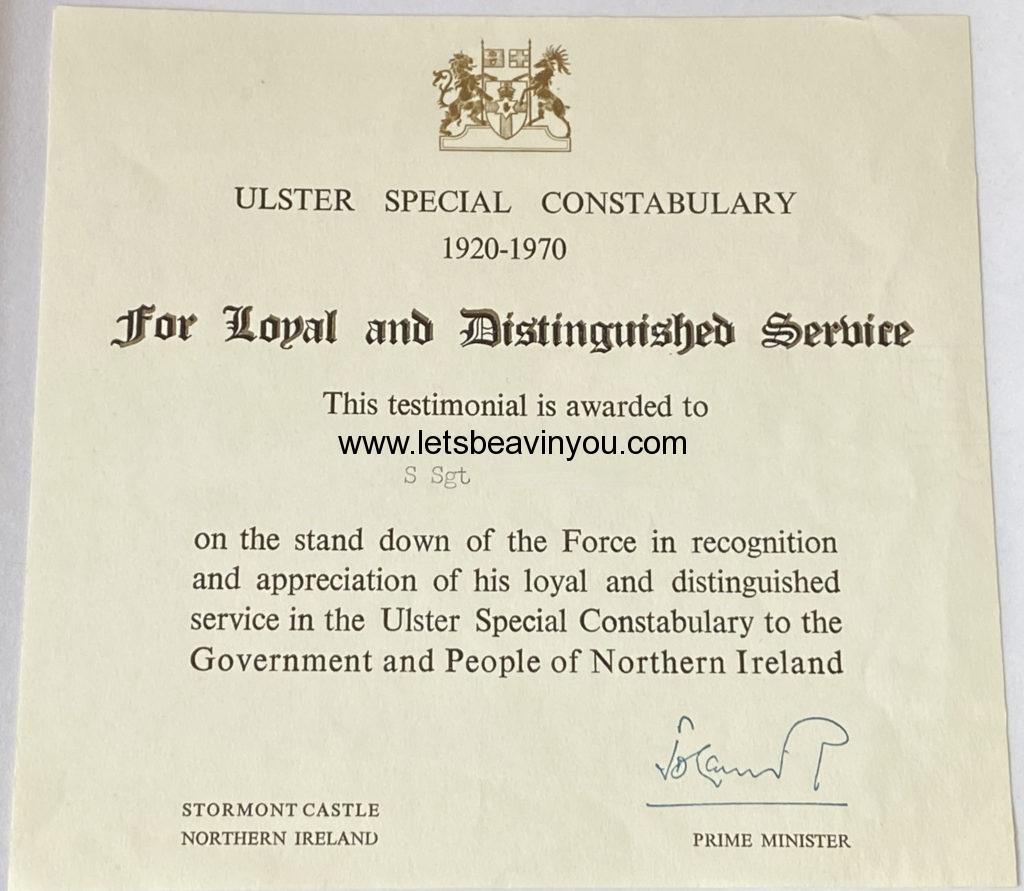
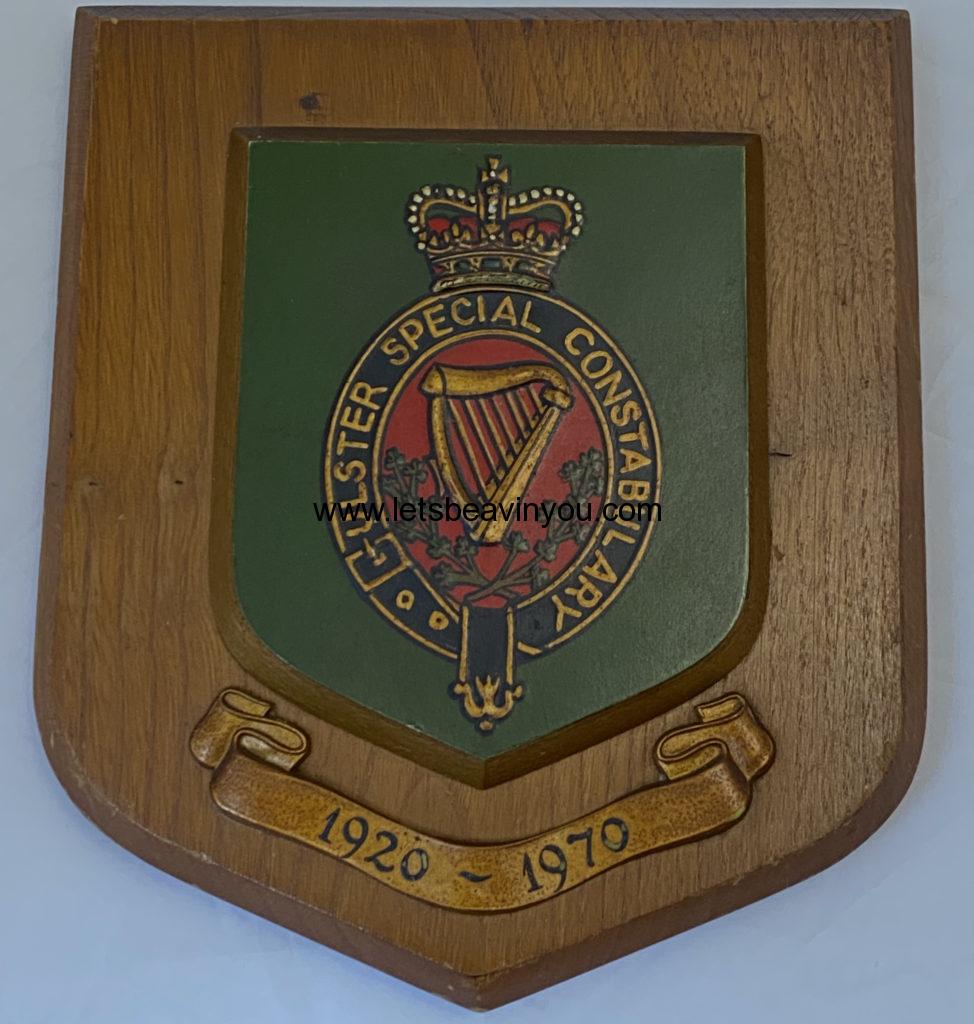
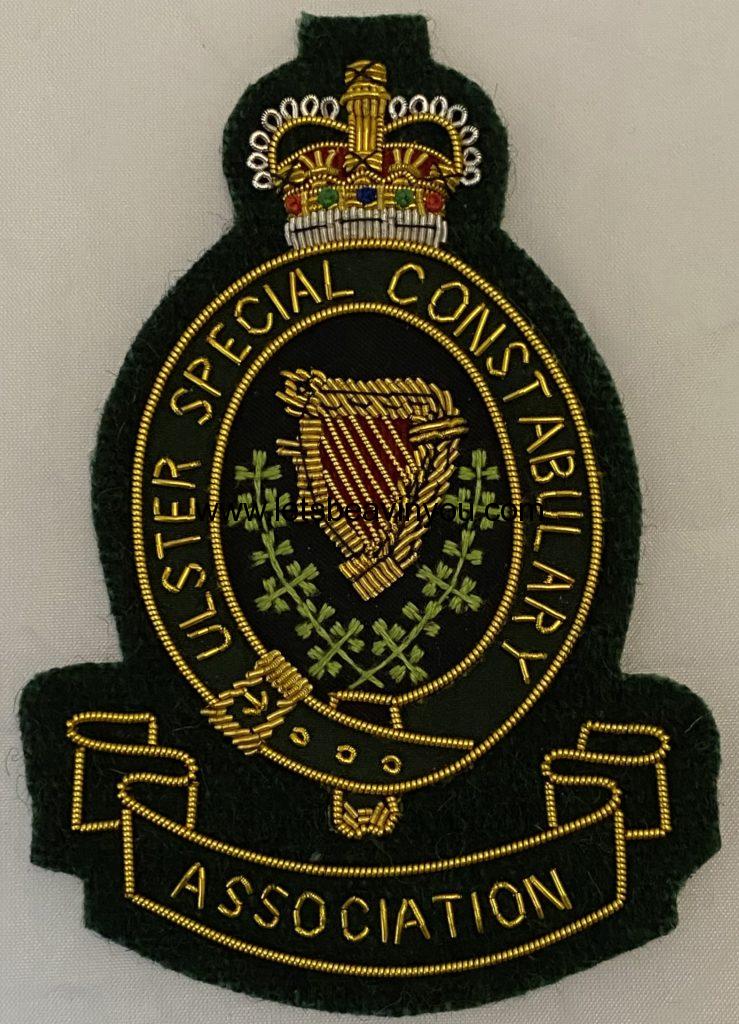

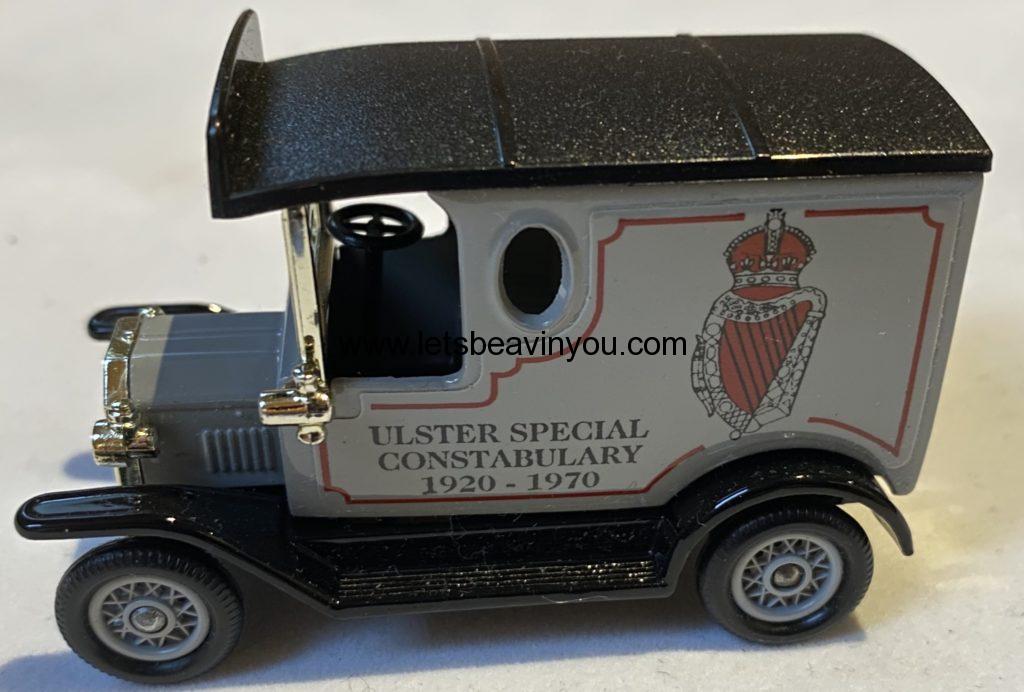
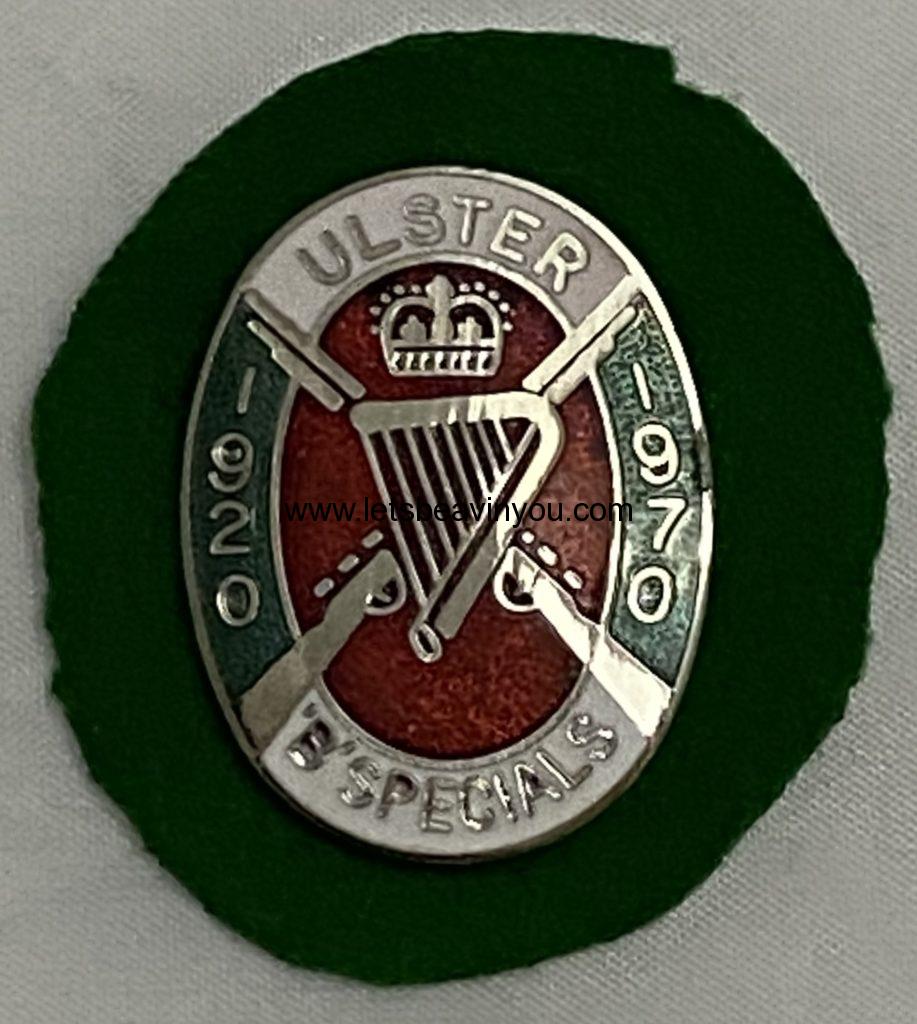
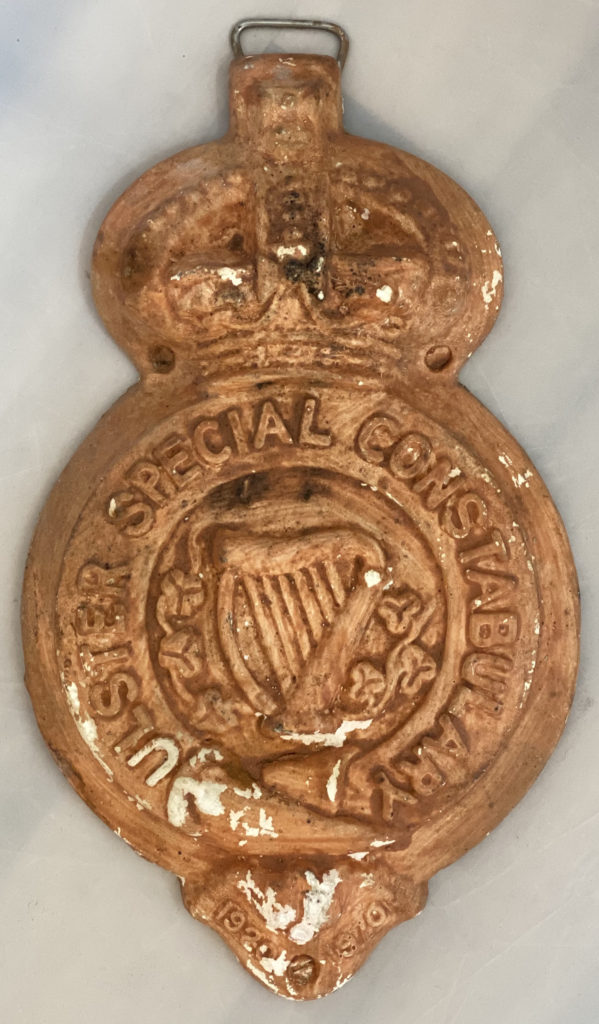
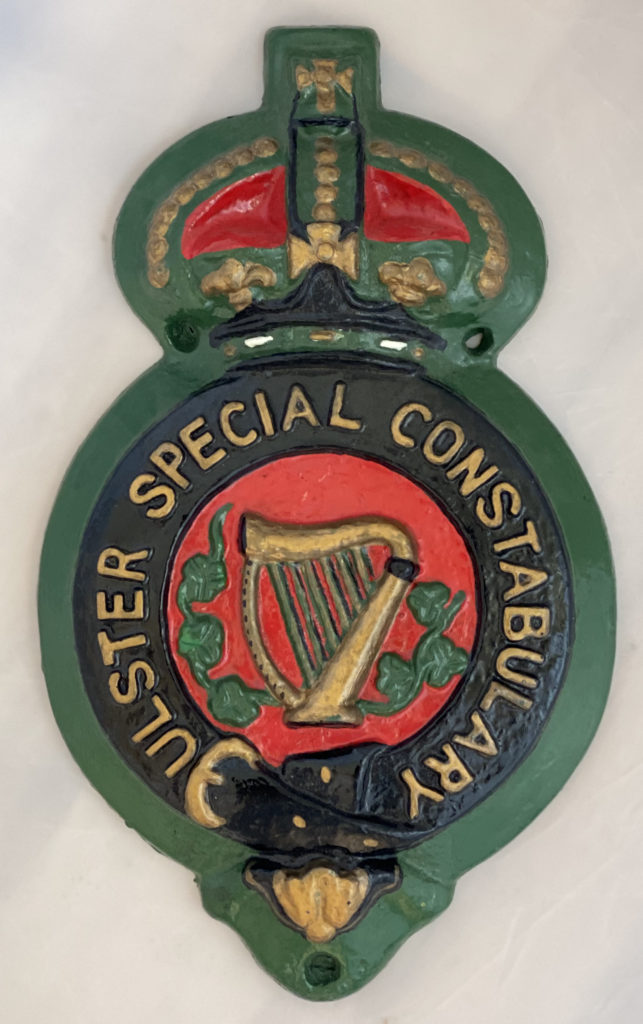
Publications

